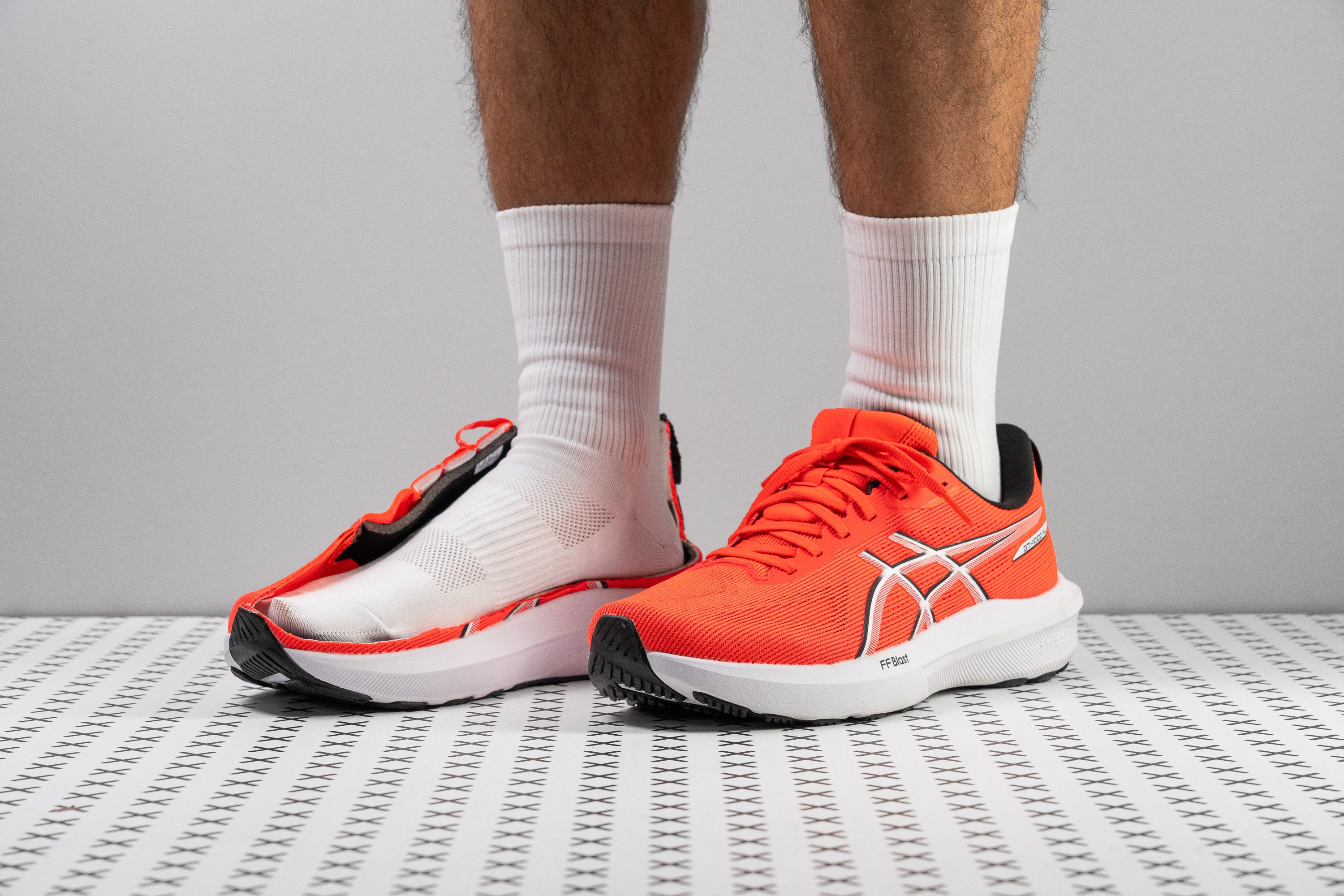Nuestra conclusión
Pros
- Estables hasta decir basta
- Ideales para talonadores
- Con una relación-precio estupenda
- Diseño sencillo y duradero
- Suela exterior con más agarre
- Cómodas para el uso diario
- Cómodas desde el minuto 1
- Espuma mejorada
Contras
- No son transpirables
- Todavía les falta retorno de energía
- Sin rebote
Veredicto de los usuarios
Comparativa
Las zapatillas de running más parecidas
+ + Añadir unas zapatillas | |||||
|---|---|---|---|---|---|
| Puntuación global | 80 Buenas | N/A | 84 Buenas | 82 Buenas | |
| Precio | 130 € | 190 € | 140 € | 160 € | |
| Pace | Correr a diario | Correr a diario | Correr a diario | Correr a diario | |
| Absorción de impactos | Moderada | Moderada | Alta | Alta | |
| Retorno de energía | Bajo | Alto | Moderado | Moderado | |
| Tracción | Alta | Alta | Moderada | Alta | |
| Arch support | Estabilidad | Estabilidad | Estabilidad | Estabilidad | |
| Peso laboratorio Peso marca | 9.6 oz / 272g 9.3 oz / 265g | 9.3 oz / 264g 9.5 oz / 269g | 10.4 oz / 296g 10.5 oz / 298g | 9.5 oz / 269g 9.4 oz / 266g | |
| Drop laboratorio Drop marca | 9.6 mm 8.0 mm | 10.1 mm 8.0 mm | 10.1 mm 10.0 mm | 8.7 mm 8.0 mm | |
| Técnica de carrera | TalónMedio/antepié | Talón | Talón | TalónMedio/antepié | |
| Talla | Tallan un poquito pequeño | - | Tallan un poquito pequeño | Tallan bien | |
| Rigidez de la mediasuela | Blanda | Blanda | Blanda | Blanda | |
| Diferencia de la rigidez de la mediasuela en frío | Normal | Pequeña | Pequeña | Normal | |
| Durabilidad de la parte delantera | Decente | Decente | Decente | Decente | |
| Durabilidad del acolchado del talón | Alta | Media | Alta | Alta | |
| Durabilidad de la suela exterior | Buena | Buena | Buena | Buena | |
| Transpirabilidad | Baja | Baja | Media | Baja | |
| Anchura / ajuste | Media | Estrecha | Media | Media | |
| Anchura de la parte delantera | Media | Estrecha | Media | Estrecha | |
| Flexibilidad | Moderada | Moderada | Moderada | Moderada | |
| Rigidez torsional | Rígidas | Rígidas | Rígidas | Rígidas | |
| Rigidez del contrafuerte del talón | Moderado | Rígido | Moderado | Rígido | |
| Talón laboratorio Talón marca | 35.4 mm 34.5 mm | 36.8 mm 33.0 mm | 36.1 mm 38.0 mm | 36.9 mm 36.5 mm | |
| Antepié laboratorio Antepié marca | 25.8 mm 26.5 mm | 26.7 mm 25.0 mm | 26.0 mm 28.0 mm | 28.2 mm 28.5 mm | |
| Anchuras disponibles | EstándarAnchoExtra Ancho | Estándar | EstándarAnchoExtra Ancho | EstándarAnchoExtra Ancho | |
| Orthotic friendly | ✓ | ✓ | ✓ | ✓ | |
| Estación | Todas las estaciones | Todas las estaciones | Todas las estaciones | Todas las estaciones | |
| Removable insole | ✓ | ✓ | ✓ | ✓ | |
| Clasificación | #307 17% inferior | #201 45% inferior | #247 33% inferior | #278 25% inferior | |
| Popularidad | #153 Top 42% | #138 Top 38% | #52 Top 14% | #66 Top 18% |
Quién debería comprárselas
Las ASICS GT 1000 14 son una opción estupenda para los corredores que:
- Estén buscando unas zapatillas de entrenamiento diario de estabilidad sencillas, que no se compliquen la vida, y que sean duraderas y asequibles.
- Actualizan sus GT 1000 cada 1 o 2 años. Esta versión mantiene la misma sensación pero viene con mejoras bien pensadas, como una absorción de impactos más alta.
- Adoran las GT 2000 pero prefieren una opción más económica. Gracias a la actualización de la espuma, las GT 1000 están más cerca que nunca de serlo.
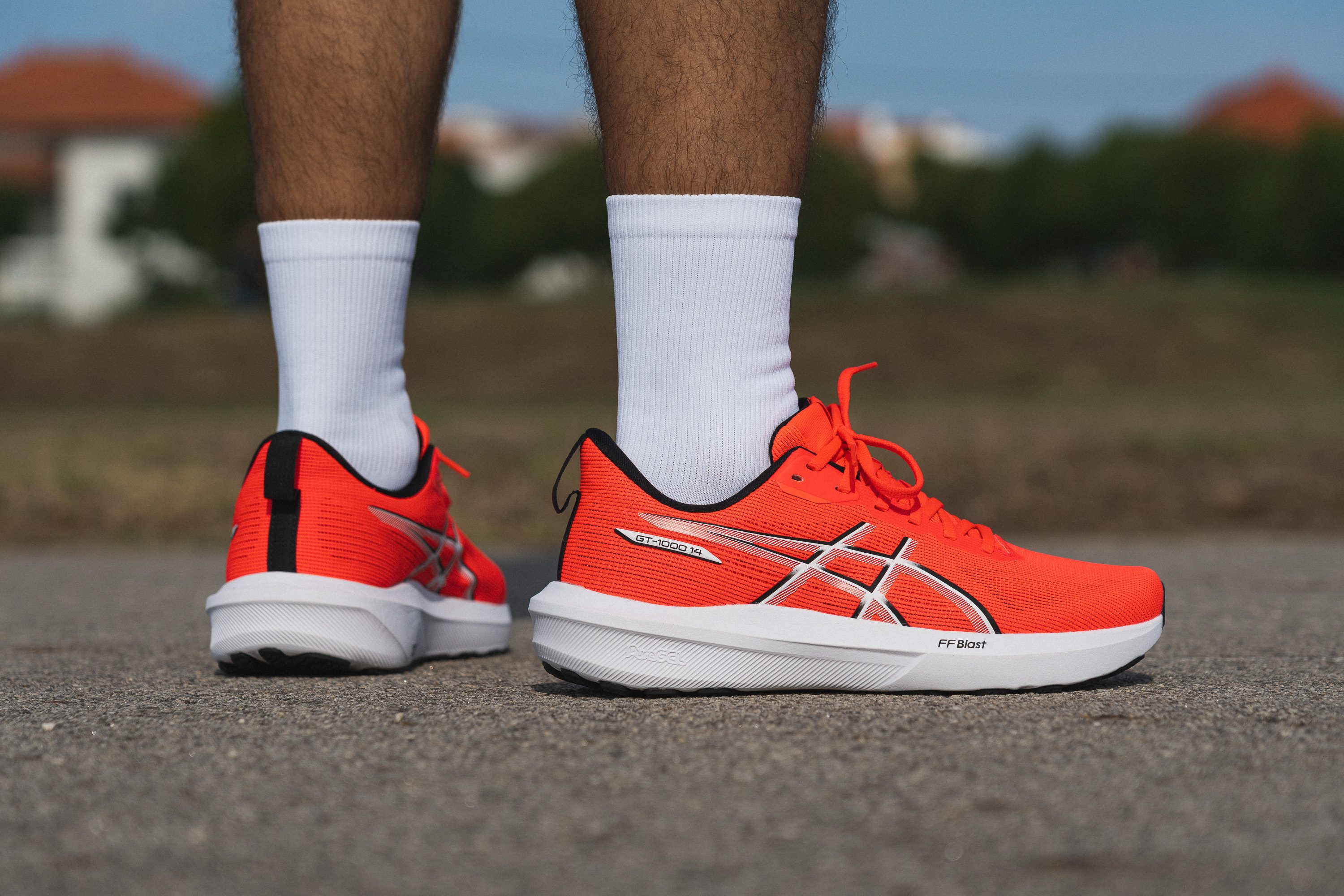
Quién NO debería comprárselas
El upper de malla técnica no le va a hacer ninguna gracia a los corredores que entrenan en climas cálidos, ya que carece de una ventilación adecuada y atrapa el calor. En nuestras pruebas, las Saucony Guide 18 y las ASICS Gel Kayano 31 nos demostraron que son más fresquitas y transpirables, aunque también son caras.
En el laboratorio, también descubrimos que las GT 1000 14 se quedan cortas en cuanto a retorno de energía. Su mediasuela FF Blast de espuma EVA no es muy reactiva, así que si estás buscando una pisada con más rebote, te recomendamos las Adidas Supernova Solution, ya que su espuma PEBA ofrece un rendimiento muy superior.
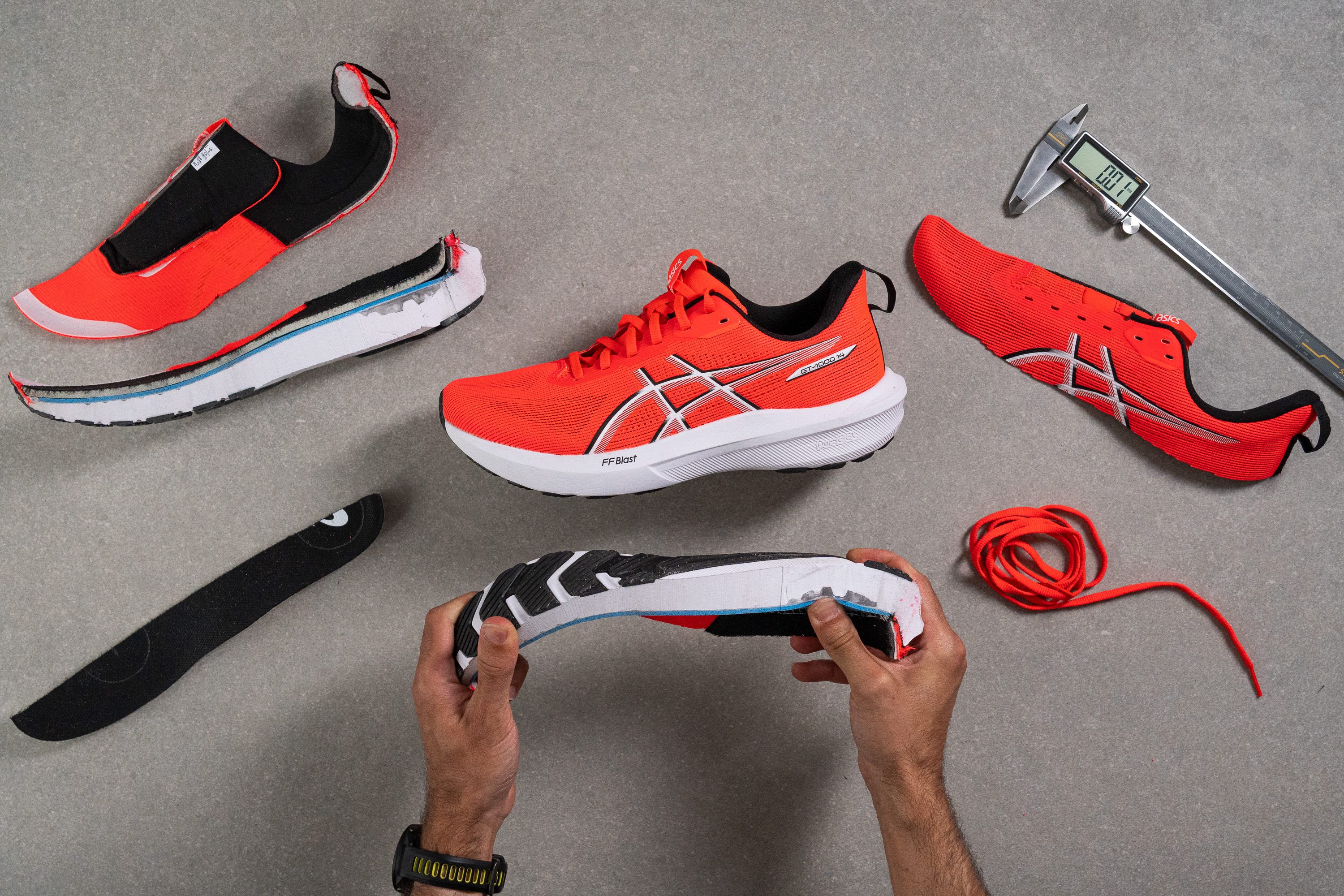
Amortiguación
Shock absorption
Estas zapatillas de running no tienen una amortiguación máxima, así que el resultado de 122 SA que se llevaron en nuestra prueba de absorción de impactos tiene todo el sentido. Está justo en torno a la media, y debería ser adecuado para las personas que están buscando unas zapatillas para distancias cortas y moderadas, de hasta 16 km aproximadamente.

| GT 1000 14 | 122 SA |
| Media | 129 SA |
Energy return
Con un retorno de energía del 54,4 %, estas zapatillas no destacan ni un poquito en este aspecto. Como ASICS muchas veces no ha conseguido ofrecer una amortiguación de primera en sus zapatillas de entrenamiento diario, la verdad es que tampoco es que fuese un resultado que nos cogió por sorpresa.
Incluso así, representa una clara mejora con respecto a sus predecesoras, que ni siquiera alcanzaron el 50 % en esta misma prueba.
| GT 1000 14 | 54.4% |
| Media | 58.5% |
Altura de la suela en la zona del talón
A ver, como ya dijimos antes, no son unas zapatillas de amortiguación máxima, pero las GT 1000 siguen ganando altura. La versión 12 medía 30,2 mm en el talón, la 13 alcanzó 33,7 mm, y esta vez medimos 35,4 mm. Esto marca una clara diferencia para los talonadores.
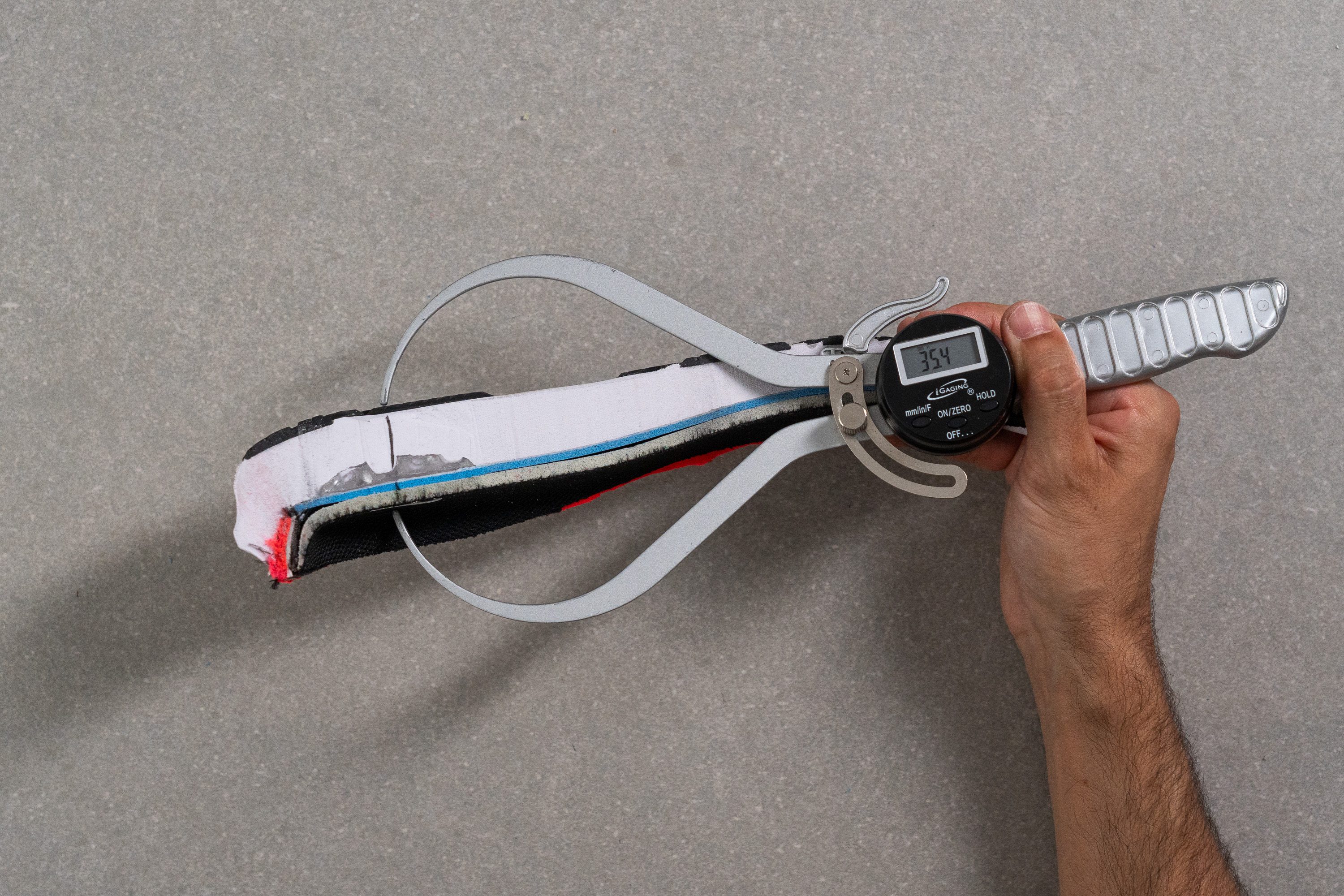
| GT 1000 14 | 35.4 mm |
| Media | 34.8 mm |
Altura de la suela en el antepié
El antepié mide 25,8 mm, lo que hace que este modelo sea una excelente opción para los corredores que están buscando unas zapatillas de estabilidad equilibradas y aptas para principiantes.
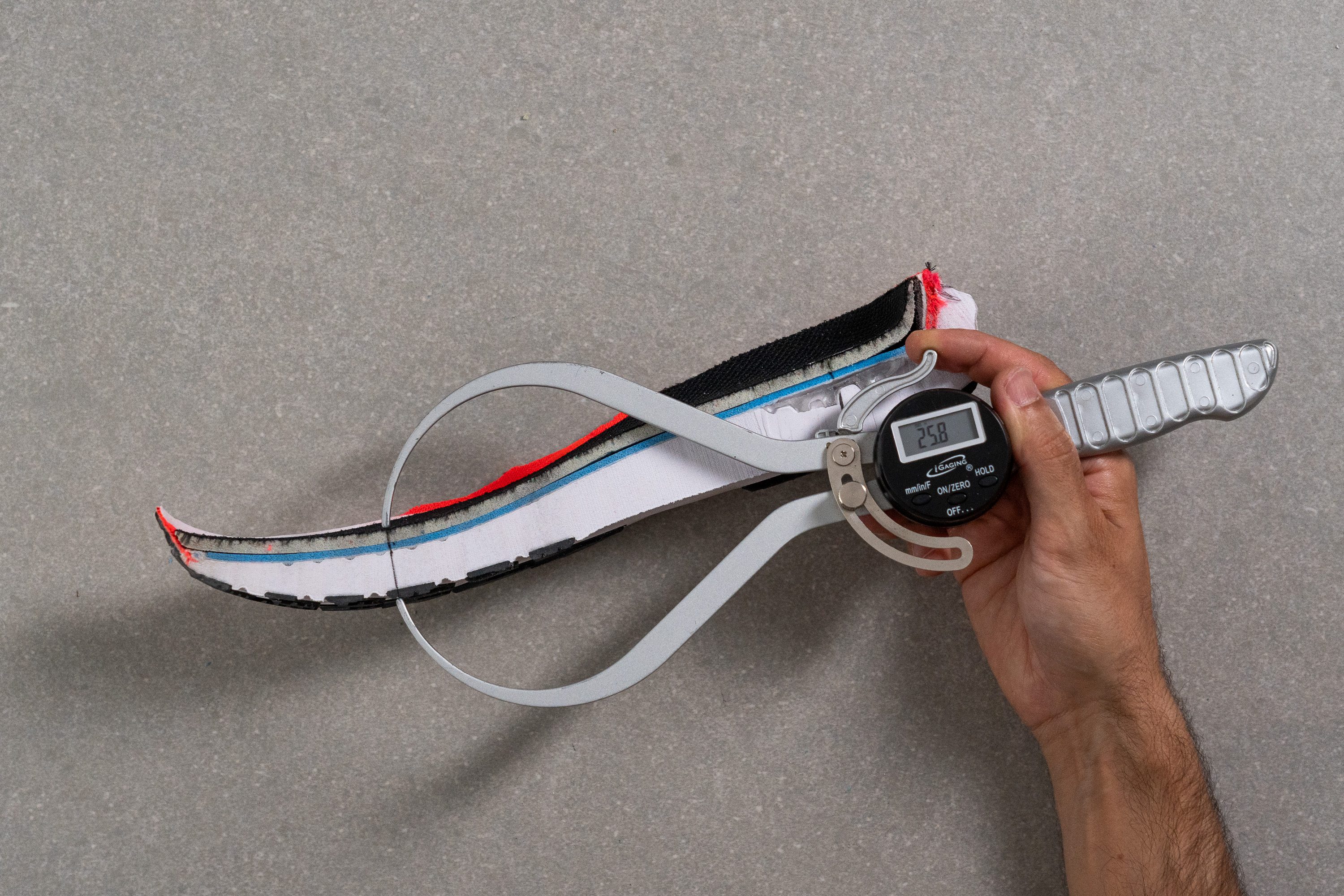
| GT 1000 14 | 25.8 mm |
| Media | 26.2 mm |
Drop
ASICS dice que las GT 1000 14 tienen un drop de 8 mm, pero a nosotros nos dio 9,6 mm.
Eso es casi un centímetro extra de espuma en el talón en comparación con el antepié, lo que hace que este modelo sea más adecuado para los principiantes y los corredores que aterrizan con el talón.
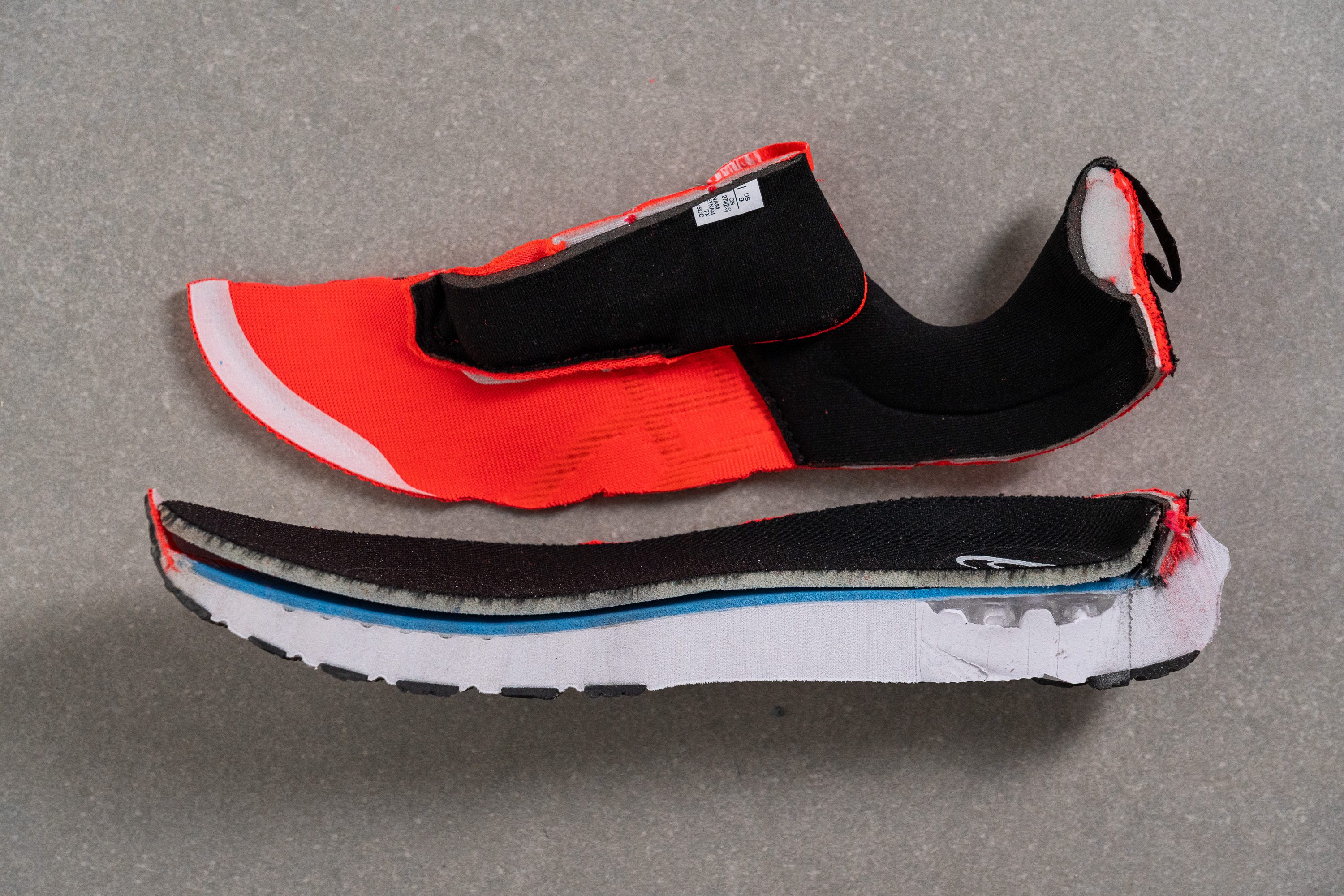
| GT 1000 14 | 9.6 mm |
| Media | 8.6 mm |
Suavidad de la mediasuela
Una de las principales novedades en las GT 1000 14 que ahora utilizan la espuma FF Blast. No es una espuma de gama alta reservada para los modelos de élite, pero supera claramente a la antigua FlyteFoam en todos los aspectos, y hace que este modelo esté más cerca de las GT 2000 13.
Cuando analizamos esta espuma con nuestro durómetro, marcó 19,4 HA: una suavidad intermedia que coincide con el enfoque general sin sorpresas de estas zapatillas.
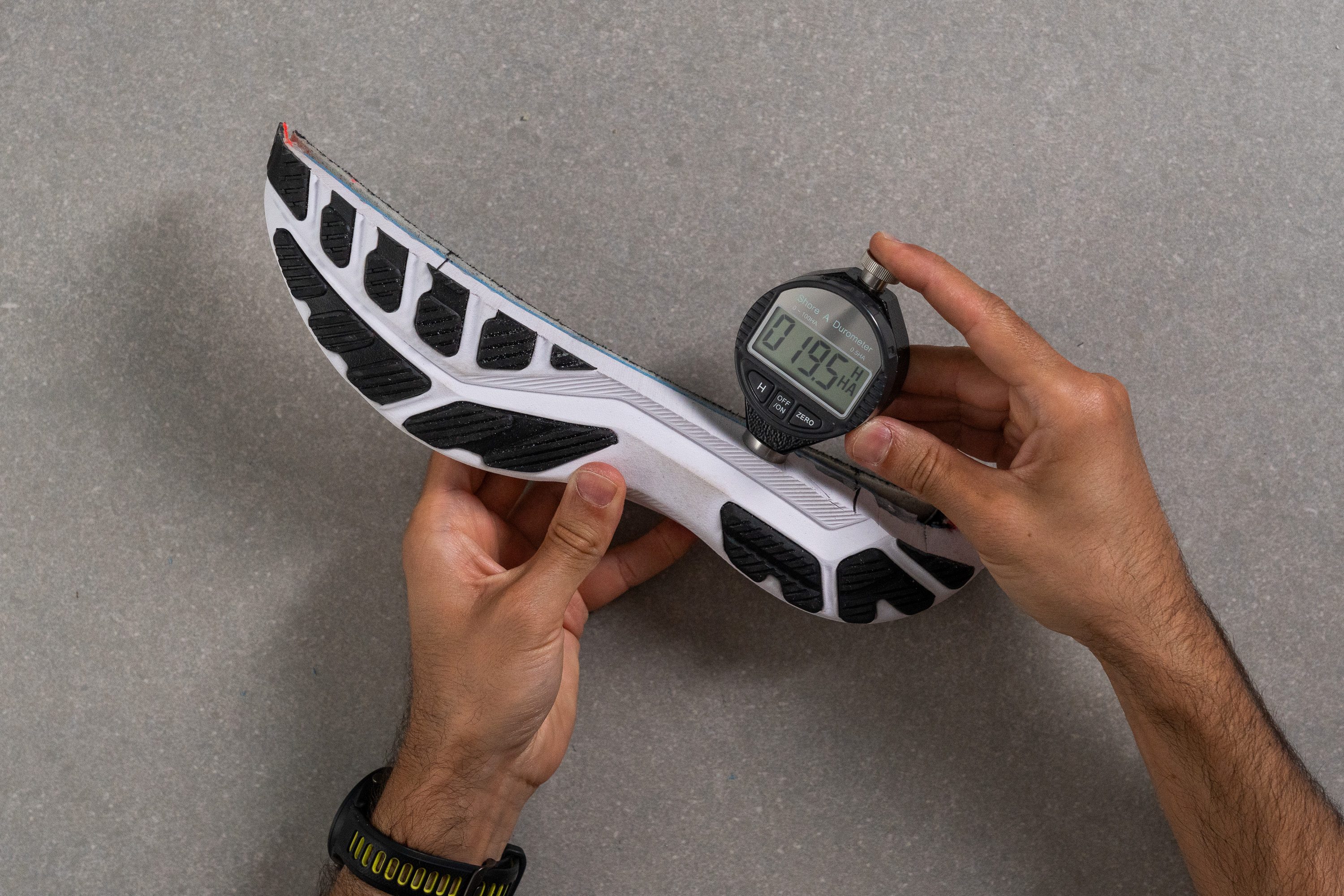
| GT 1000 14 | 19.4 HA |
| Media | 20.4 HA |
Rocker
Hoy en día, las zapatillas con rocker están por todas partes, pero parece que en el mercado todavía hay espacio para diseños más tradicionales. Las GT 1000 14 se mantienen fieles a esa fórmula, con solo una pequeña curvatura en el talón y en el antepié. La verdad es que nos parece una noticia estupenda para los fans de las GT 1000.
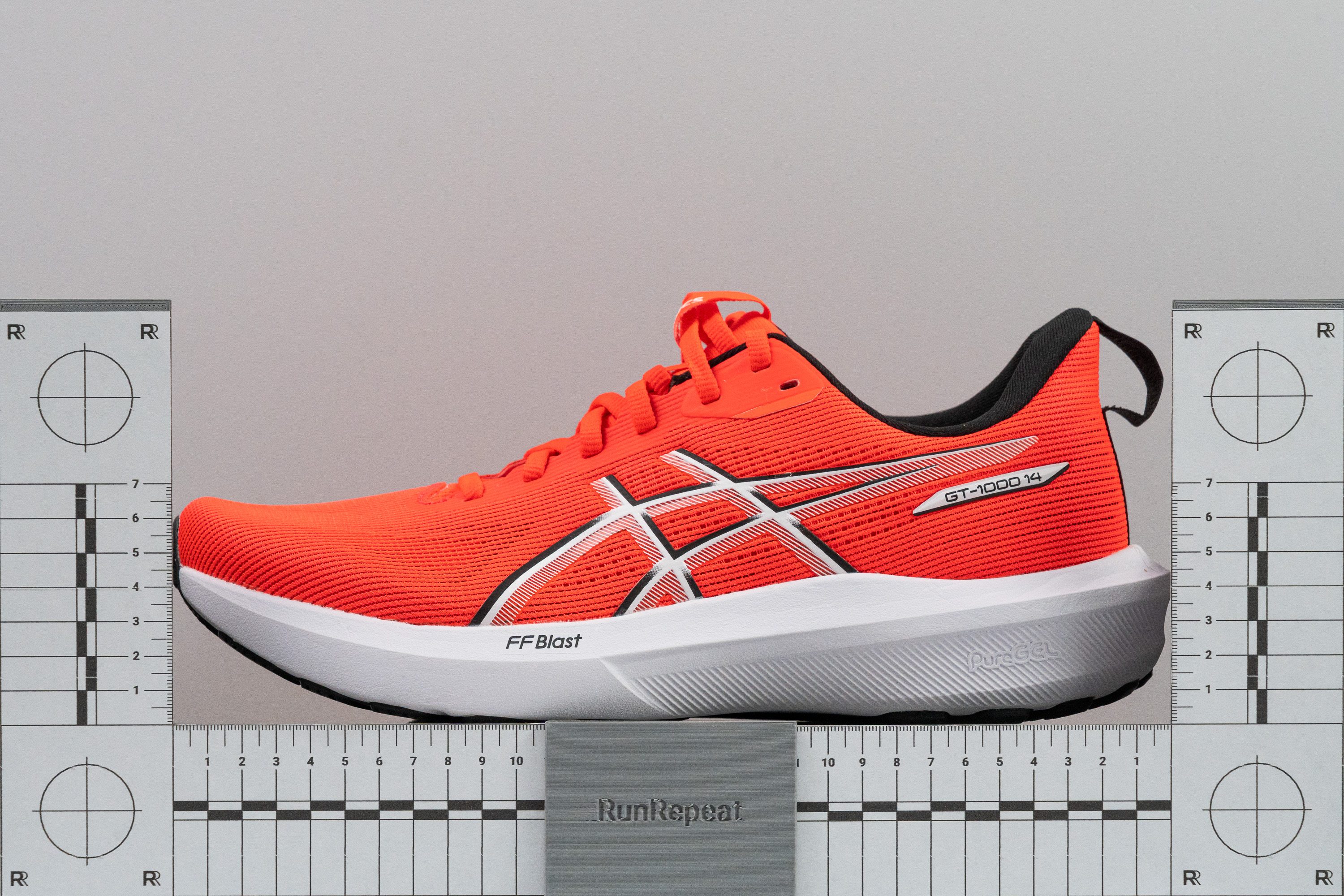
PureGEL
Aunque las GT 1000 no tienen “Gel” en su nombre, como las Gel Nimbus 27 o las Gel Cumulus 27, ASICS ha incorporado una unidad PureGEL en el talón para suavizar los aterrizajes y aumentar la comodidad. Pero claro, esto tiene un precio, ya que este material, que parece una gelatina, ofrece muy poco rebote y reduce el retorno de energía.
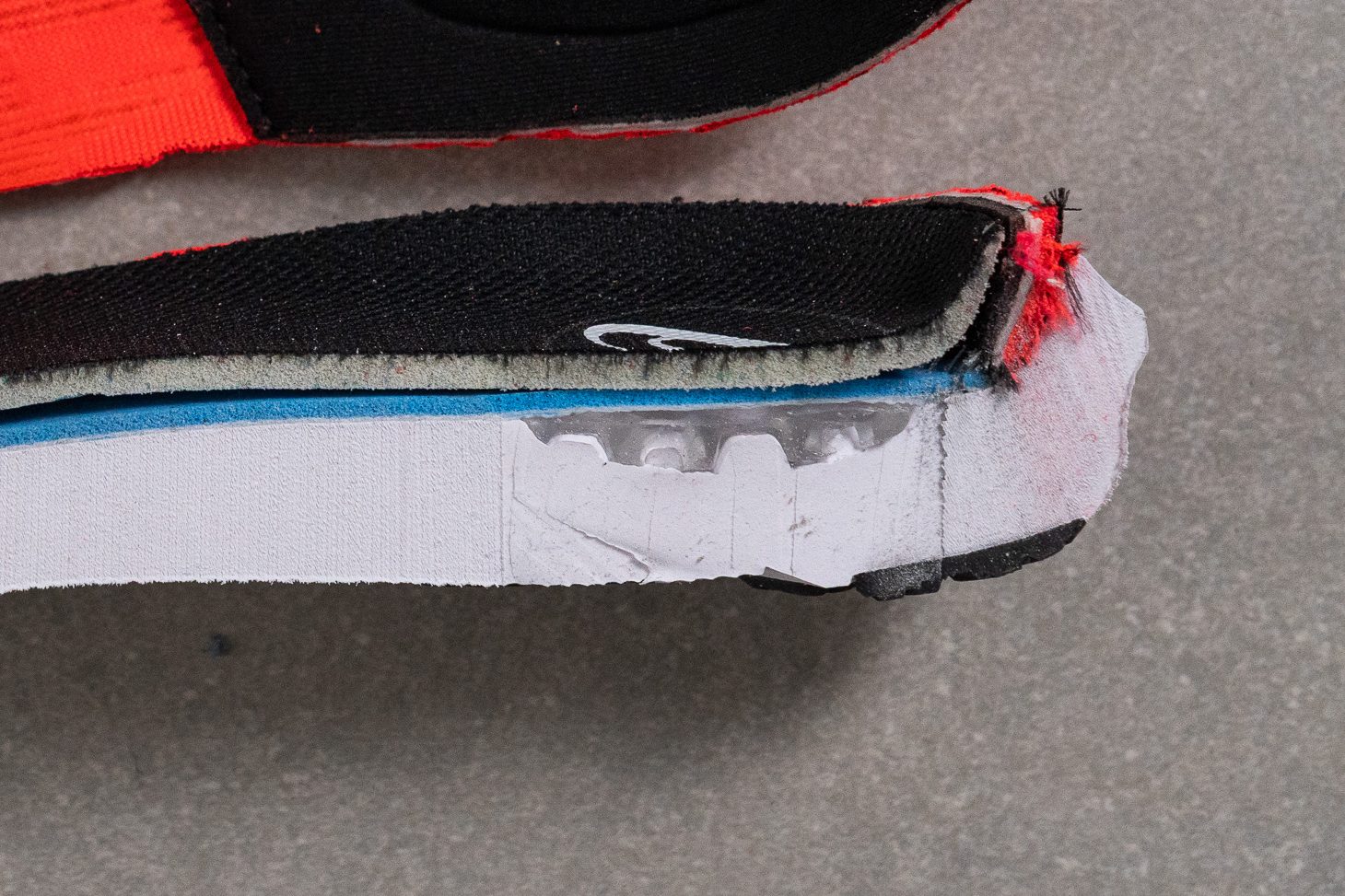
Tallaje y ajuste
Talla
Las ASICS GT 1000 14 quedan un poco pequeñas (12 votos).
Anchura / Ajuste
Descubrimos que el ajuste es casi idéntico al de las versiones anteriores, aunque esta actualización ofrece un poco más de espacio en la parte superior.
Cuando la analizamos en el laboratorio, medimos 97,5 mm en su punto más ancho. Es ideal para los corredores con pies de anchura media o incluso ligeramente anchos. Y si necesitas incluso más espacio, no te preocupes, que en la mayoría de los países te la puedes comprar en versión ancha.
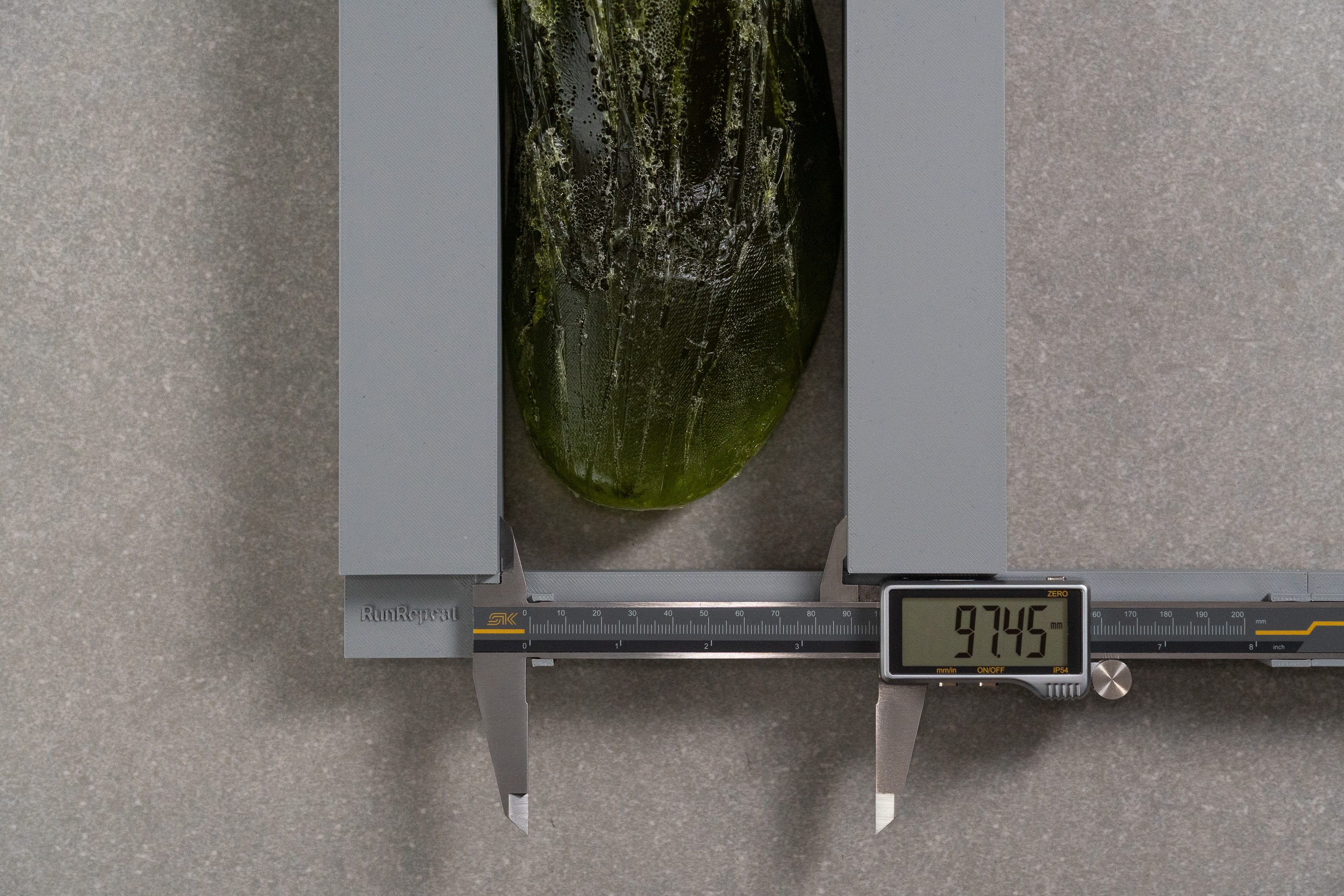
| GT 1000 14 | 97.5 mm |
| Media | 95.1 mm |
Anchura de la parte delantera
La anchura de la parte delantera también va de la mano con la de las versiones anteriores. Cuando la medimos, nuestro calibre marcó 74,1 mm, que es espacio suficiente para que no te estruje los dedos. Eso sí, está lejos del diseño amplio y con forma de pie que encontrarías en un par de Altra o Topo.

| GT 1000 14 | 74.1 mm |
| Media | 73.3 mm |
Altura de la parte delantera
Si hay una zona que sea un poquito más ceñida es la altura de la parte delantera, que es sobre 1 mm más baja que la media.
Eso sí, cuando salimos a correr con ellas en nuestras pruebas de uso, no sentimos ni molestias ni presión en esa zona.
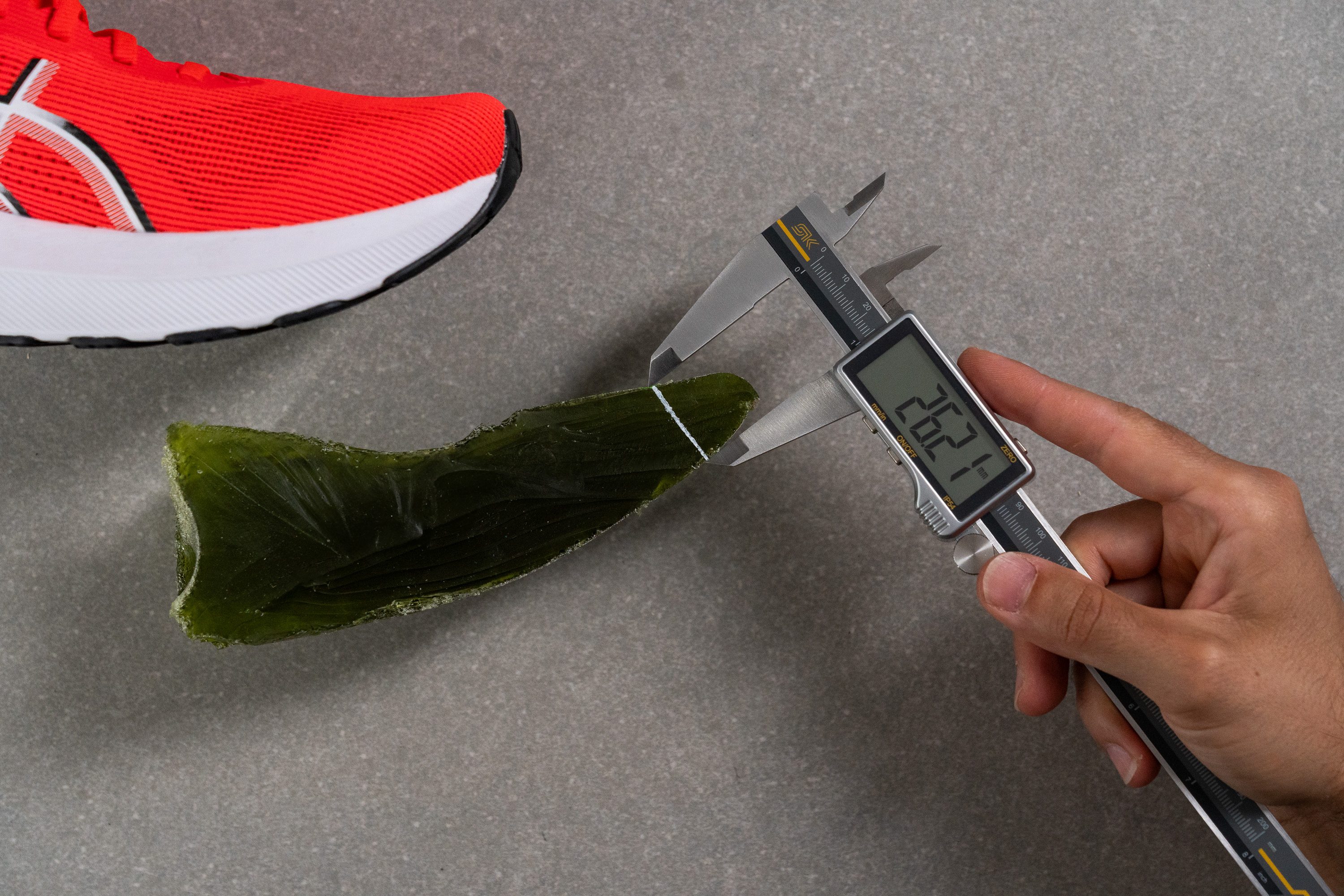
| GT 1000 14 | 26.2 mm |
| Media | 27.1 mm |
Tracción / Agarre
Traction test
Estamos encantados de decirte que las GT 1000 14 vienen con una suela cargada de agarre que se llevó un 0,50 en nuestra prueba, una mejora importante respecto a las GT 1000 13, que se obtuvieron un 0,35. Tanto si corres bajo la lluvia como por zonas secas, la versión 14 ofrece una tracción confiable.
| GT 1000 14 | 0.50 |
| Media | 0.48 |
Diseño de la suela exterior
La suela de las GT 1000 14 tiene segmentos de caucho AHAR (ASICS High Abrasion Rubber) en las zonas de mayor desgaste, como el talón, el antepié y la cara externa. Los tacos tienen cortes profundos para mejorar la flexibilidad que hacen que las zapatillas se doblen de forma más natural. Las zonas de caucho están separadas de la EVA expuesta, que se ve a través de varios cortes en el mediopié y en la zona central.
La cobertura de caucho es generosa en general y protege bien la zona del mediopié, pero los cortes estratégicos ayudan a reducir el peso y permiten que la espuma se comprima con mayor libertad.

Flexibilidad / Rigidez
Analizamos la flexibilidad de las GT 1000 14 en nuestro laboratorio y descubrimos que solo necesitaron 12,3 N de fuerza para doblarse 30 grados. Ese resultado confirma lo que esperábamos de unas zapatillas diseñadas para ofrecer una sensación más natural bajo los pies que la mayoría de las zapatillas de entrenamiento modernas, que tienen unas mediasuelas enormes.
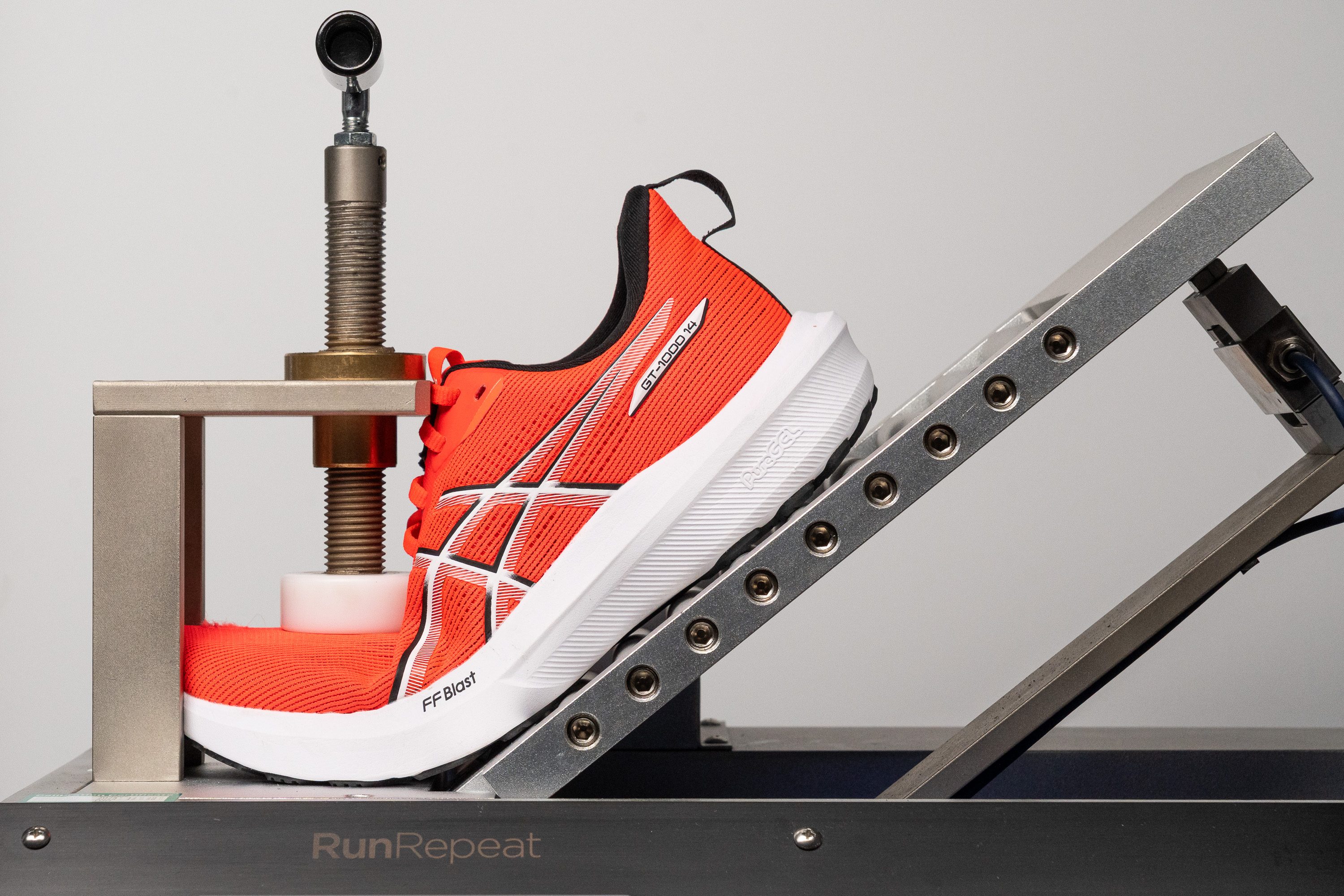
| GT 1000 14 | 12.3N |
| Media | 15.3N |
Peso
Cuando pesamos las GT 1000 14, vimos que se mantenían en su línea, alcanzando una cifra muy parecida a la de sus predecesoras. Solo pesan un 1,5 % menos con sus 272 g, así que están justo en la media, y completamente dentro de un rango razonable.
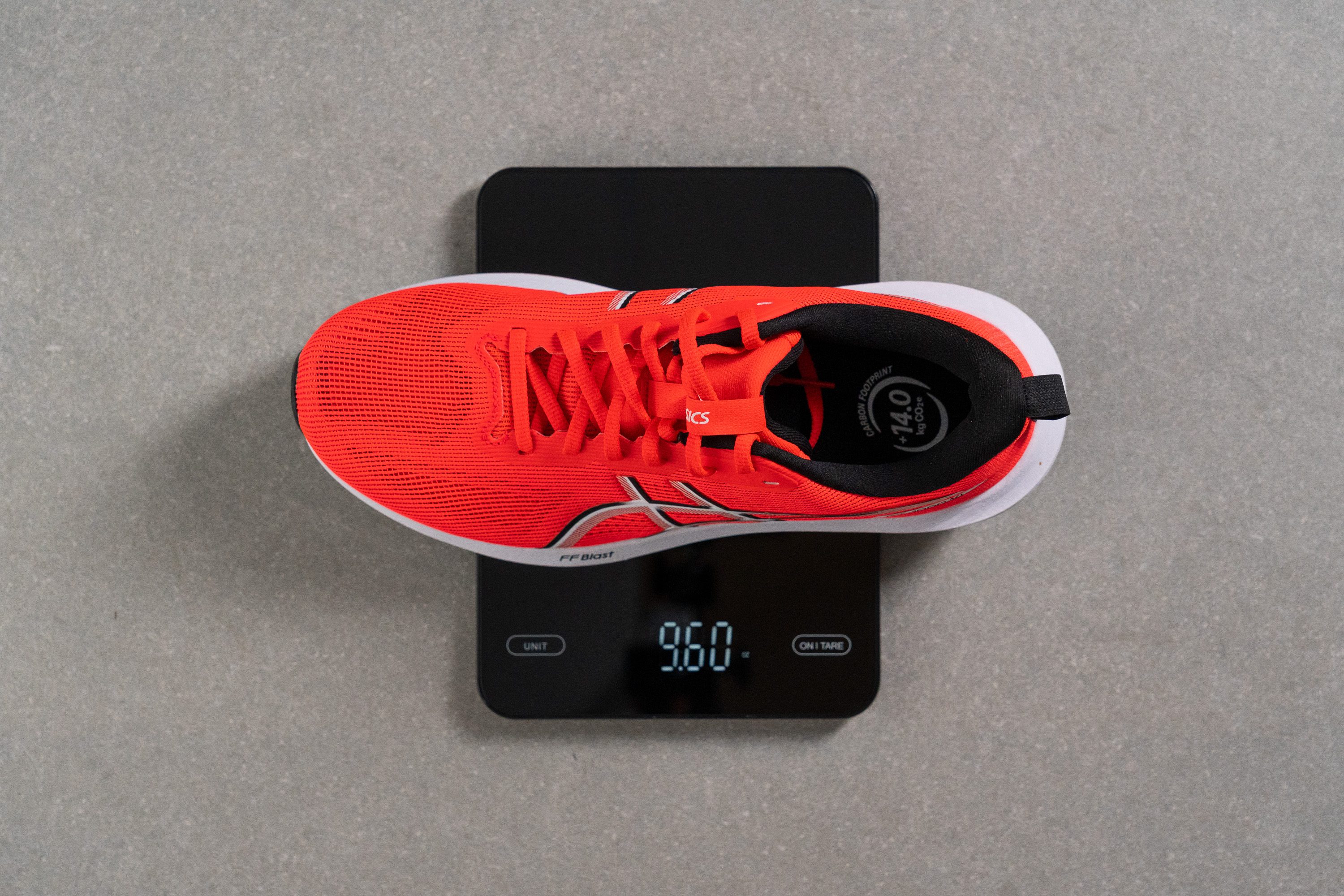
| GT 1000 14 | 9.6 oz (272g) |
| Media | 9.3 oz (264g) |
Transpirabilidad
Las zapatillas de running económicas suelen venir con ciertos sacrificios en cuanto a retorno de energía, peso, agarre o transpirabilidad. En nuestras pruebas, descubrimos que el flujo de aire es uno de los puntos más débiles de las GT 1000 14.
Gracias a nuestra máquina de humo, comprobamos que la malla no dejaba que saliese prácticamente nada, así que se llevó solo un 2/5. Así que, a las personas que corren cuando hace calor, a lo mejor les parecen un poco incómodas estas ASICS.
Para confirmarlo, acercamos el upper a nuestra luz y vimos claramente que no hay agujeritos para el flujo de aire. Vamos, que estas zapatillas dan más calor de lo que esperábamos.
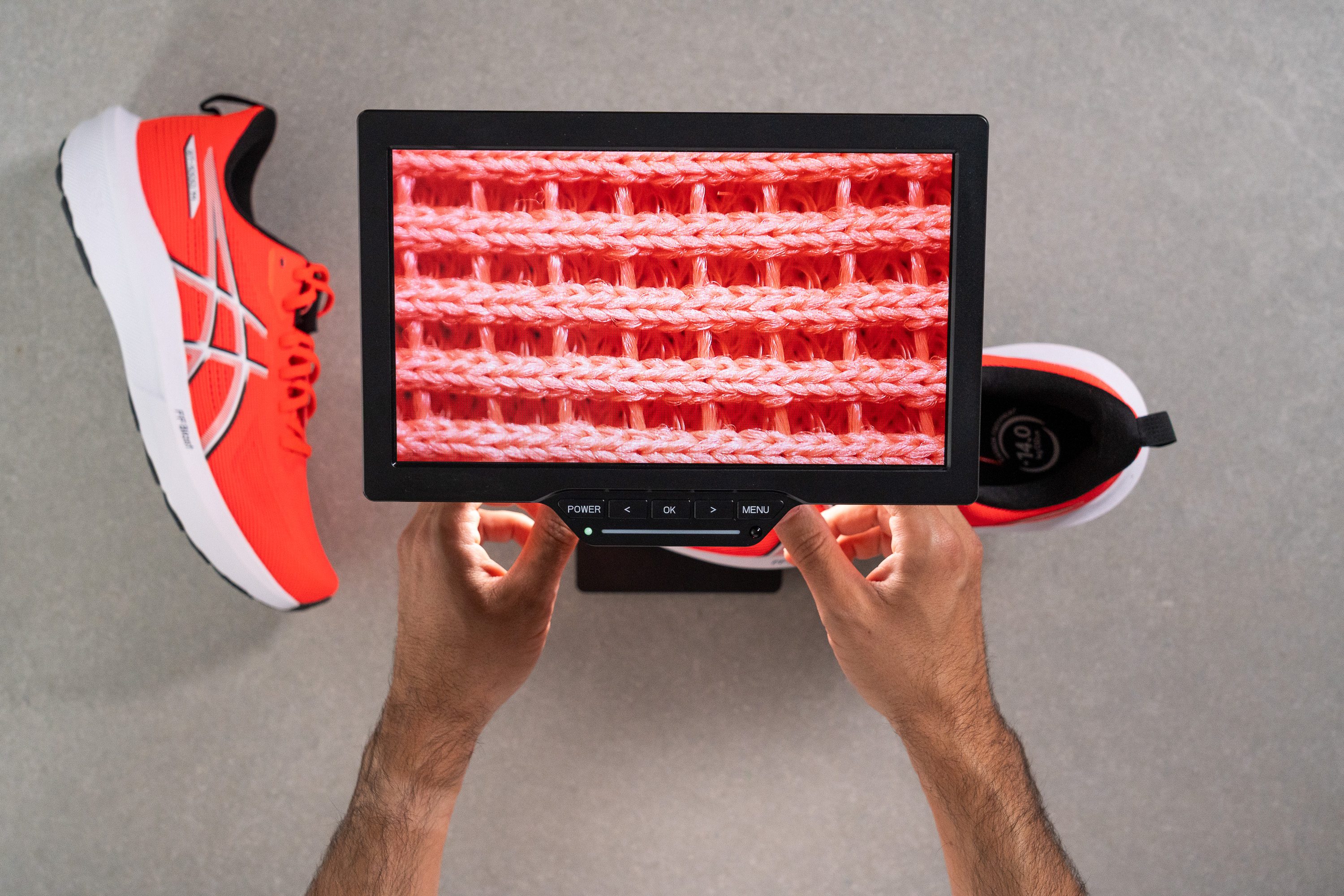
Gracias a nuestro microscopio digital, confirmamos que hay muy poquitos huecos por los que podría salir el aire.
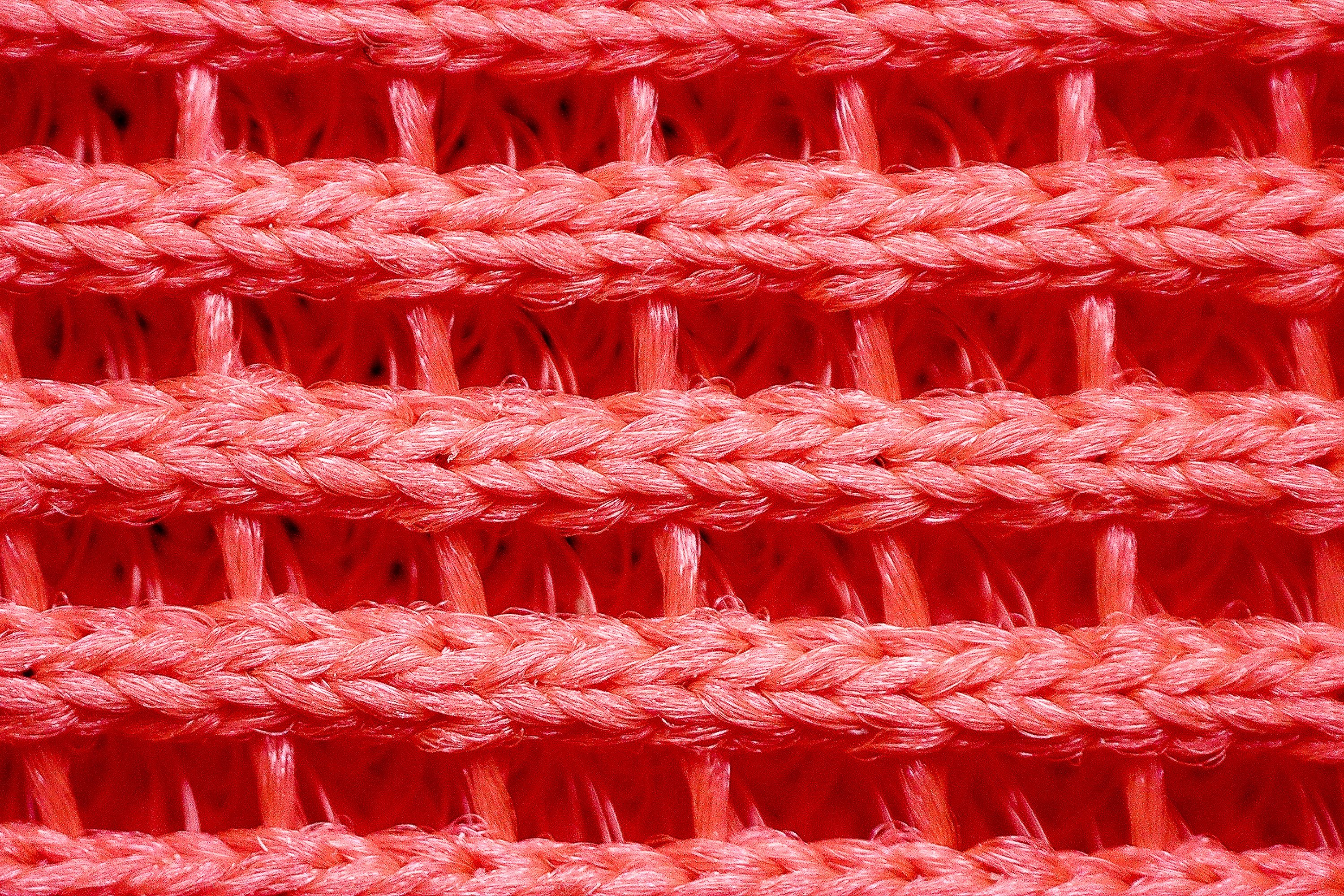
A ver, si hablamos de la comodidad, el upper es estupendo, y más en la zona del talón, ya que ASICS la acolchó bastante. Y aunque no creemos que, teniendo en cuenta lo que cuestan, una baja transpirabilidad haría que los corredores no se comprasen estas zapatillas... sí que nos parece un aspecto a mejorar en la versión 15.
| GT 1000 14 | 2 |
| Media | 3.7 |
Estabilidad
Prueba de estabilidad lateral
Analizamos las GT 1000 14 y comprobamos que están diseñadas específicamente para ofrecerte una estabilidad confiable. De hecho, creemos que son ideales para el entrenamiento diario de los corredores que necesitan más sujeción de la que proporciona un modelo neutro estándar, como pueden ser las Versablast 4.
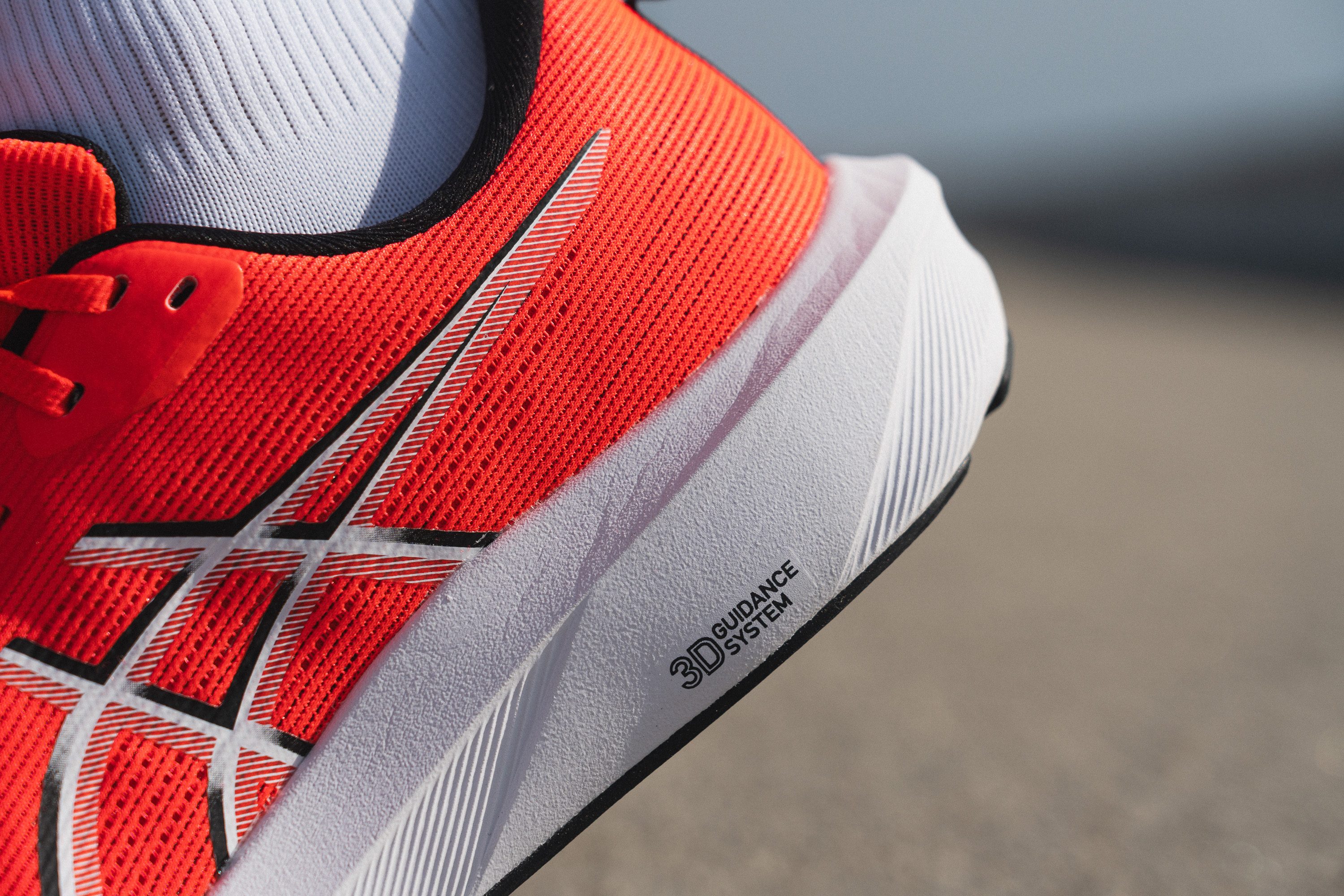
ASICS lo consigue al combinar varias decisiones de diseño inteligentes: la tecnología 3D Guidance System con una estructura rígida en el arco del pie, paredes de lamediasuela altas y un talón ancho.
Rigidez torsional
Este modelo también es más rígido que la media de las zapatillas de running, así que no te esperes que se doble como tu profe de yoga. De hecho, nos costó un montón, así que le dimos un 4/5 en nuestra prueba de rigidez torsional.
| GT 1000 14 | 4 |
| Media | 3.5 |
Rigidez del contrafuerte del talón
El contrafuerte del talón es parecido al de otros modelos de entrenamiento diario, y se llevó un 3/5 en nuestra prueba de rigidez, así que ofrece un equilibrio razonable entre sujeción y comodidad. De hecho, nos sorprendió un poco que no fuera más rígido, y más teniendo en cuenta todo el acolchado que tiene.
| GT 1000 14 | 3 |
| Media | 2.9 |
Anchura de la mediasuela - antepié
A pesar de ser, básicamente, unas zapatillas de estabilidad, ASICS mantuvo la anchura del antepié en 113,6 mm. Para nosotros, eso es una señal clara de que el diseño favorece más a los talonadores que a los corredores de mediopié o de metatarsos.
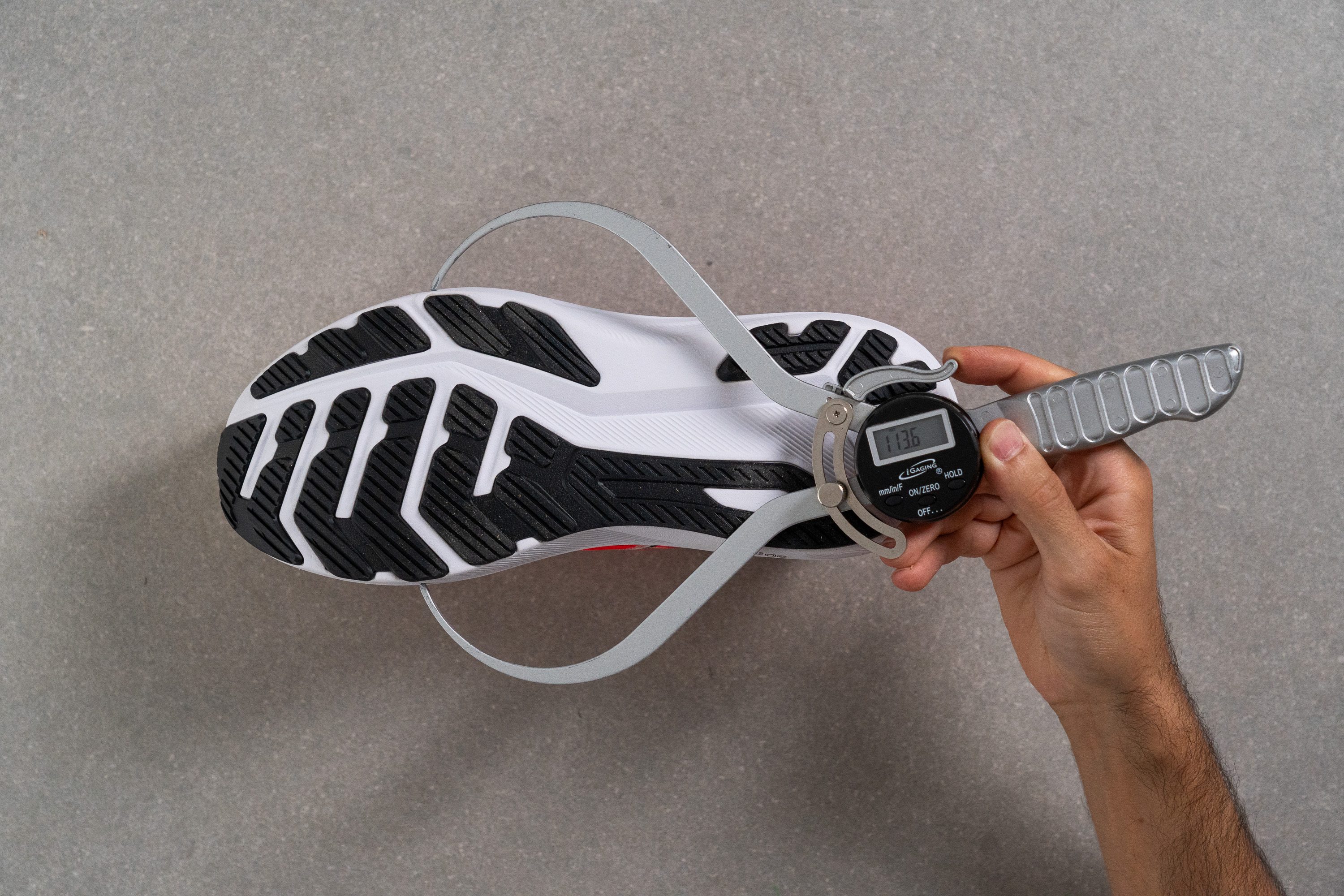
| GT 1000 14 | 113.6 mm |
| Media | 114.4 mm |
Anchura de la mediasuela - talón
Sobre todo porque el talón es bastante más ancho que la media con sus 94,8 mm, mejorando bastante la estabilidad en esa zona. Igual que algunos de los últimos modelos de ASICS, que se centran en la sujeción, el mediopié de este modelo es muy ancho y crea una plataforma que parece un cuadrado en el mediopié.

| GT 1000 14 | 94.8 mm |
| Media | 90.7 mm |
Durabilidad
Durabilidad de la parte delantera
Aunque la falta de agujeritos para el flujo de aire afecta a la transpirabilidad, también tiene sus ventajas: una parte delantera más duradera. Con un merecido 3/5 en nuestra prueba, el desgaste prematuro no debería ser un problema para la mayoría de los corredores.
| GT 1000 14 | 3 |
| Media | 2.6 |
Durabilidad del acolchado del talón
El acolchado del talón nos dejó boquiabiertos con un 5/5 perfecto, lo que garantiza que incluso los corredores que suelen desgastar las zapatillas en esta zona no conseguirán hacerle un agujero a esta estructura tan resistente.
| GT 1000 14 | 5 |
| Media | 3.4 |
Durabilidad de la suela
También tenemos buenas noticias sobre la suela, ya que nuestro Dremel solo pudo hacerle daños de 0,7 mm de profundidad al caucho AHAR. Es un resultado impresionante que supera claramente la media en nuestro laboratorio, confirmando que esta suela ofrece agarre y durabilidad.
| GT 1000 14 | 0.7 mm |
| Media | 1.1 mm |
Grosor de la suela
De hecho, creemos que la suela exterior de 4,5 mm a lo mejor es demasiado gruesa teniendo en cuenta la sólida durabilidad del caucho AHAR. Hacerla más finita podría conseguir que la experiencia fuese más agradable al correr, reduciendo un poco de peso general.
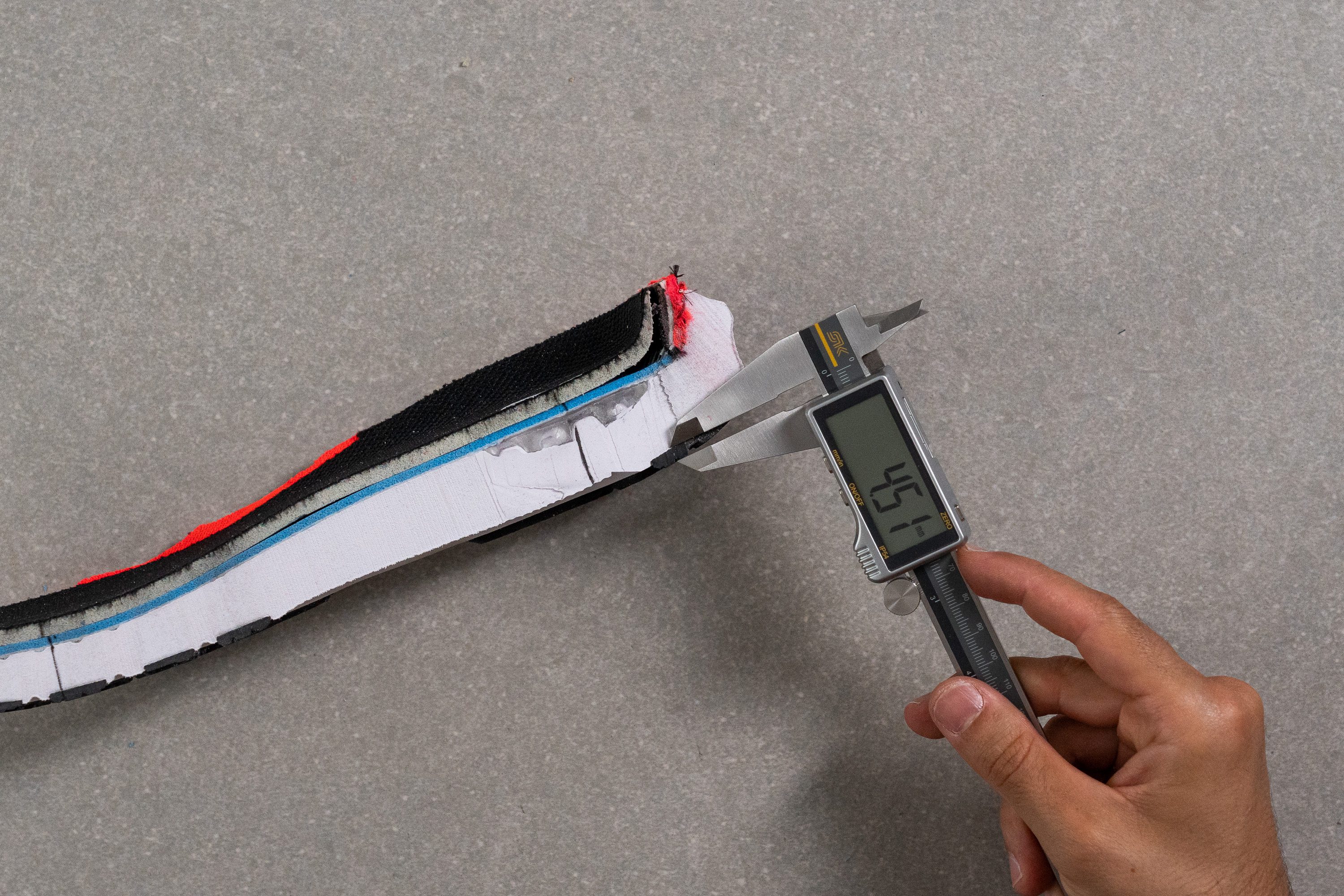
| GT 1000 14 | 4.5 mm |
| Media | 3.2 mm |
Varios
Grosor de la plantilla
La plantilla es más gruesa de lo habitual, con 5,2 mm, así que conseguimos un poco más de amortiguación bajo el pie en comparación con lo que solemos ver en otros modelos de entrenamiento diario.
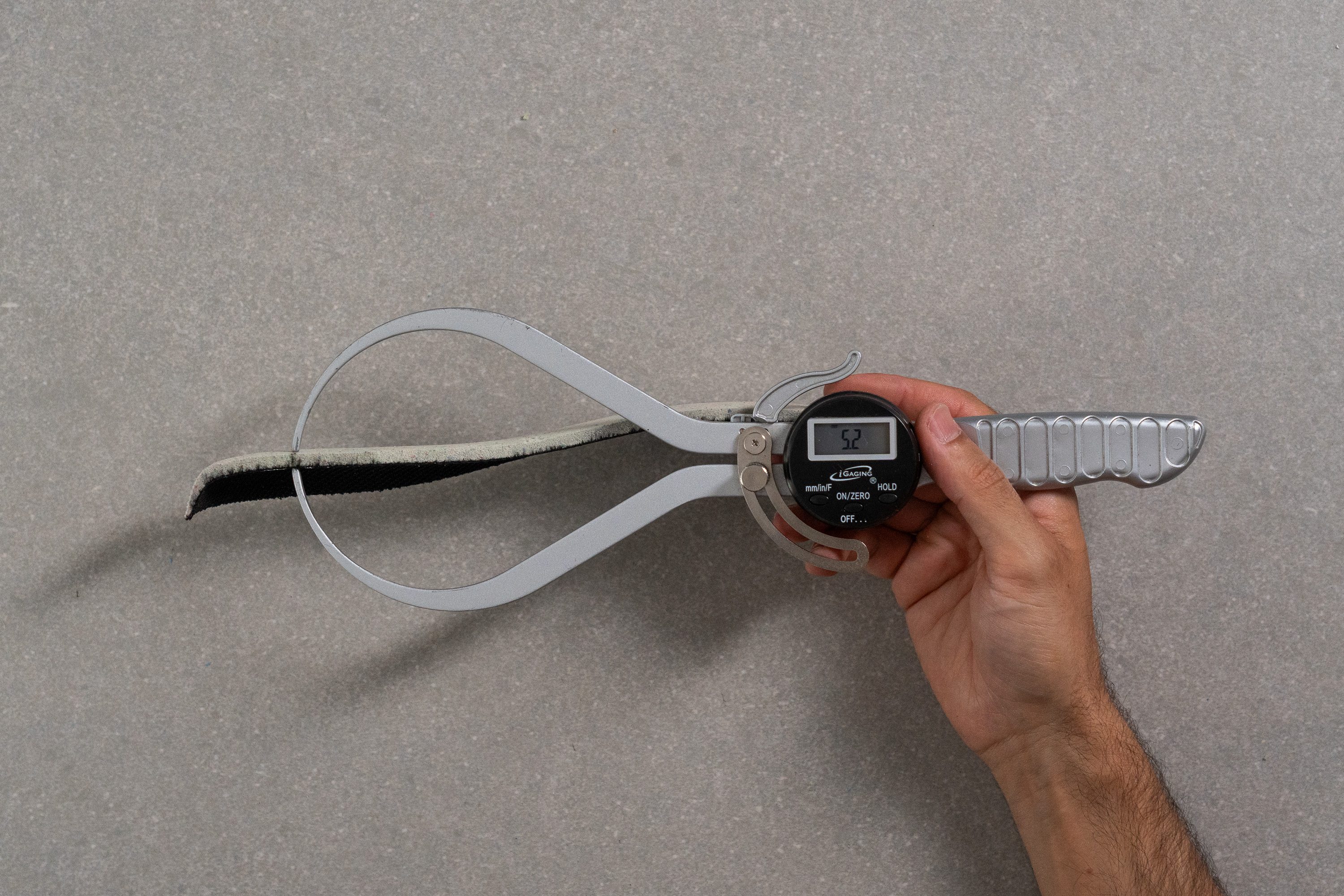
| GT 1000 14 | 5.2 mm |
| Media | 4.5 mm |
Plantilla extraíble
Si quieres usar una plantilla más finita o cambiar la que trae este modelo, no hay ningún problema.
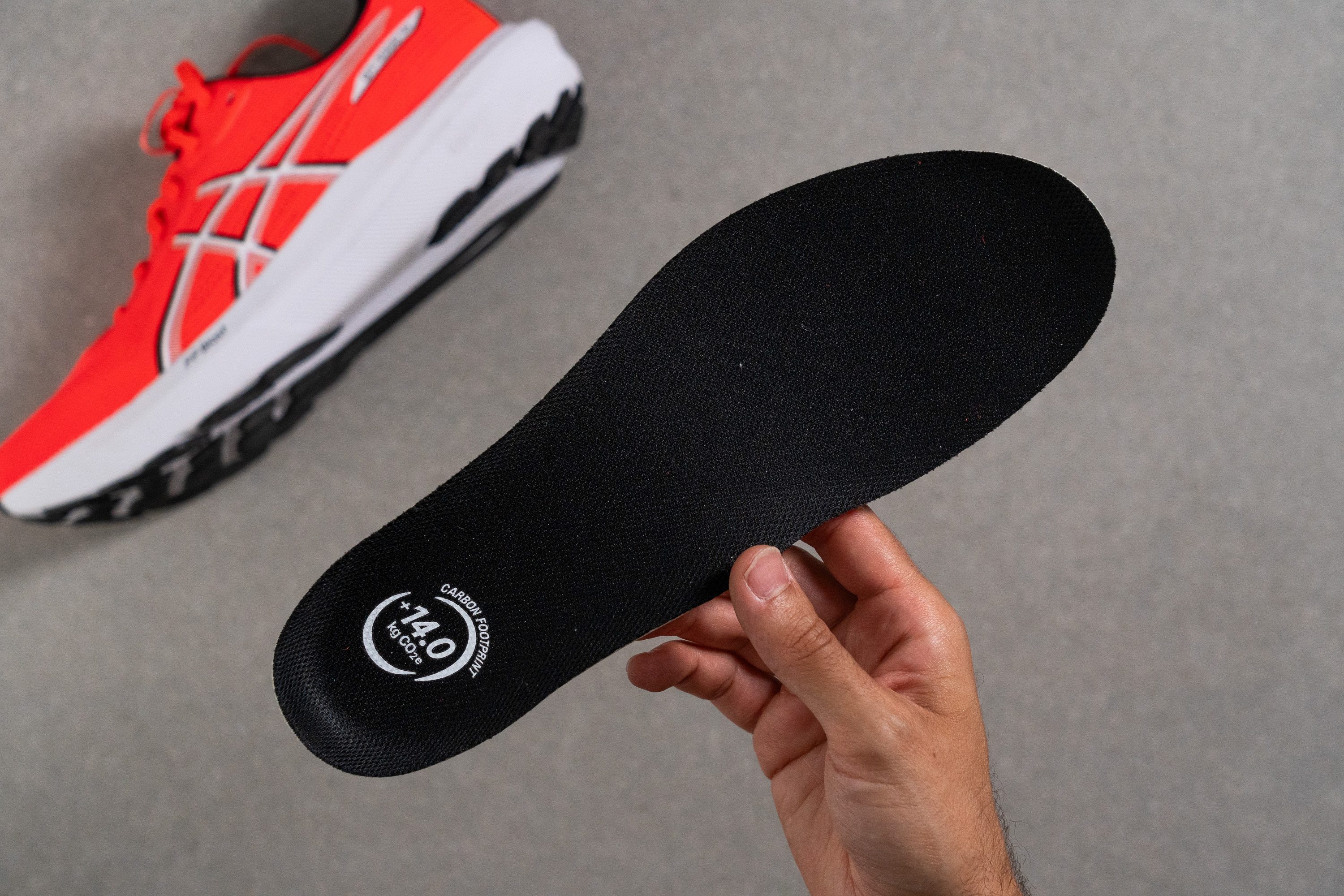
| GT 1000 14 | Sí |
Rigidez de la mediasuela en frío (%)
Aunque este modelo representa un paso adelante cuando hablamos de espuma, la FF Blast sigue siendo EVA. En nuestras pruebas, se volvió un 39 % más rígida, que es algo que se nota bajo los pies.
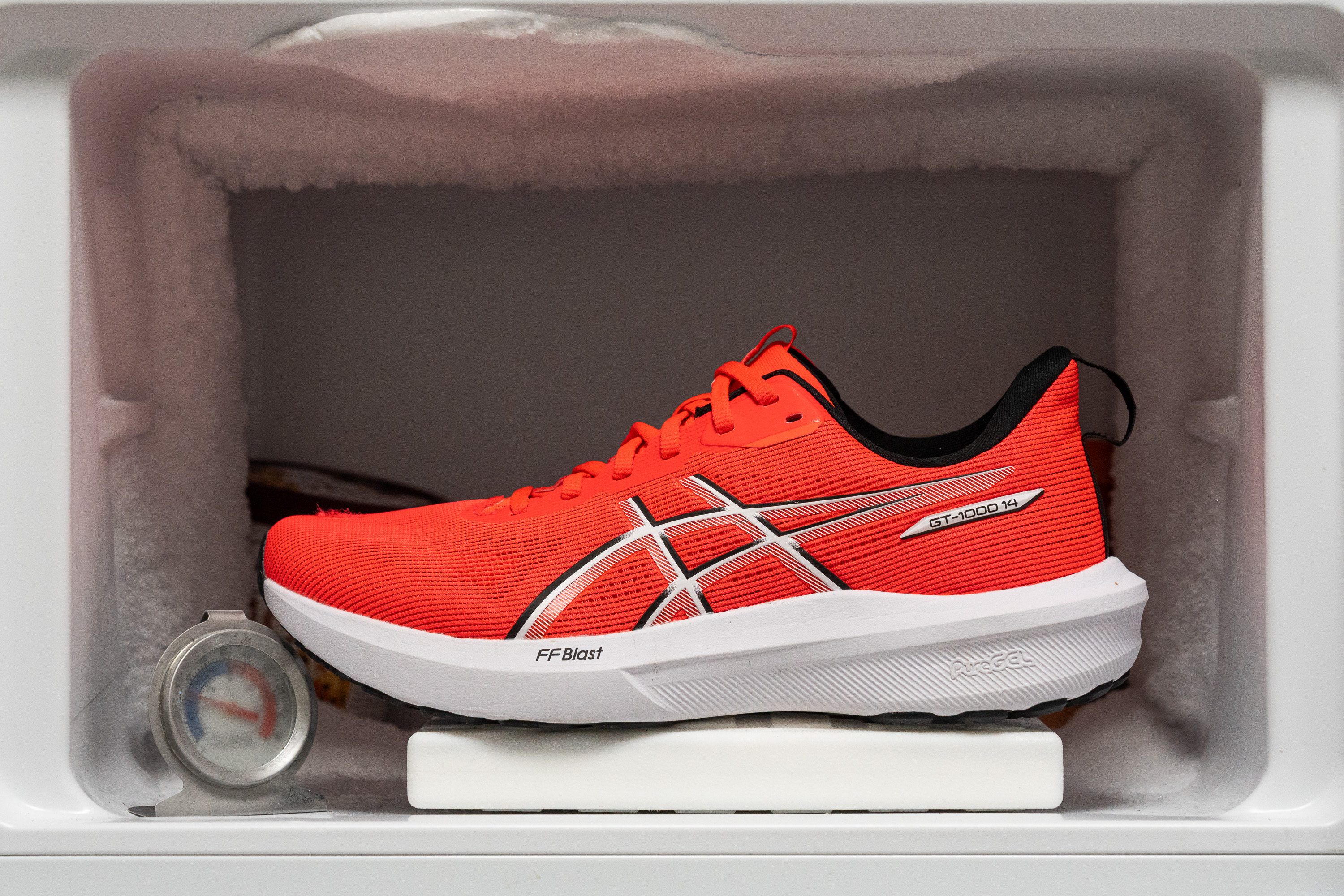
| GT 1000 14 | 39% |
| Media | 24% |
Elementos reflectantes
Las ASICS GT 1000 14 no tienen ni un elemento reflectante, pero es algo normal para los modelos más económicos.
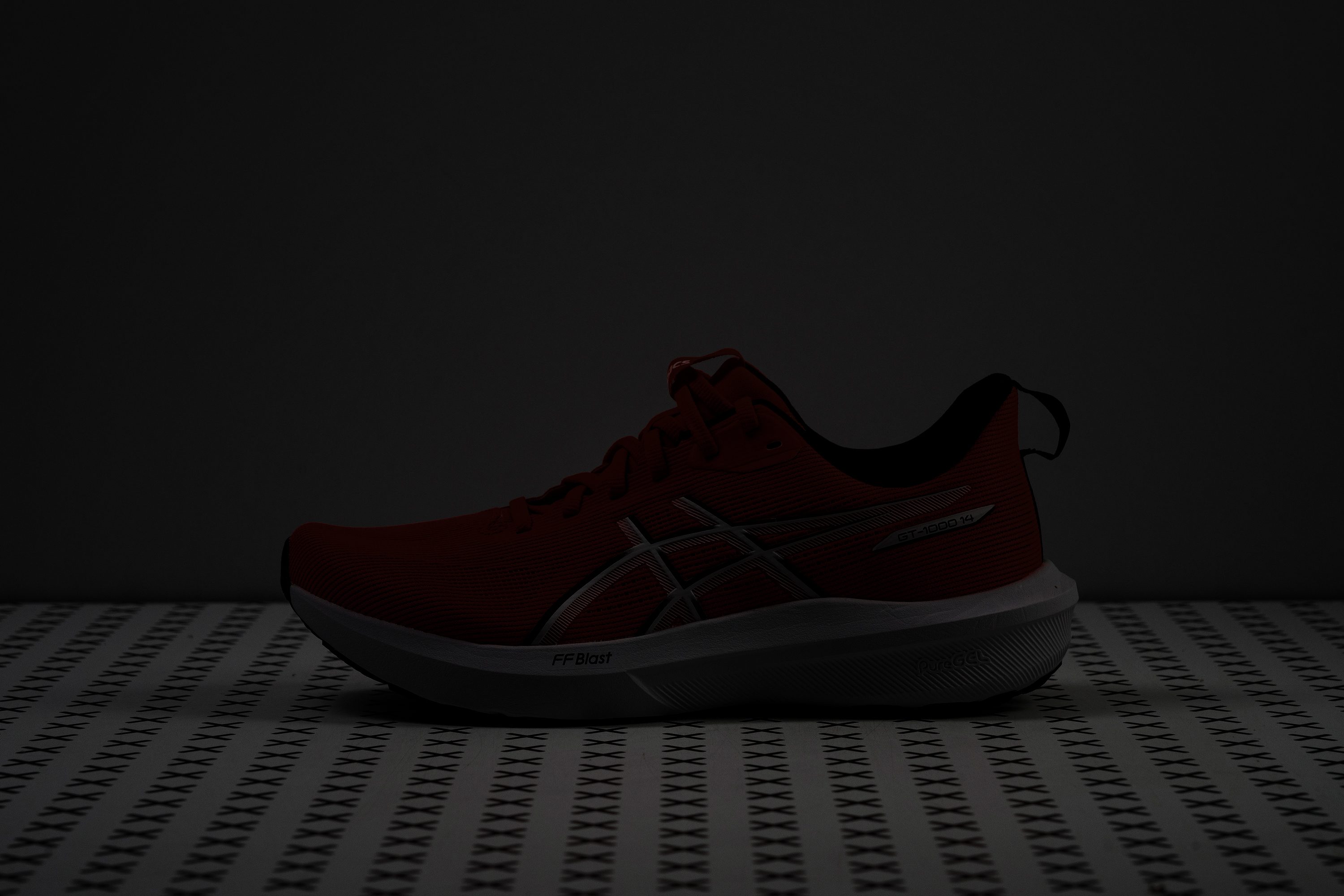
| GT 1000 14 | No |
Acolchado de la lengüeta
Nos hemos fijado en que, en los últimos 2 años, ASICS les ha puesto lengüetas gruesas a sus modelos más económicos, mientras que a los de gama alta les pone lengüetas muy finitas.
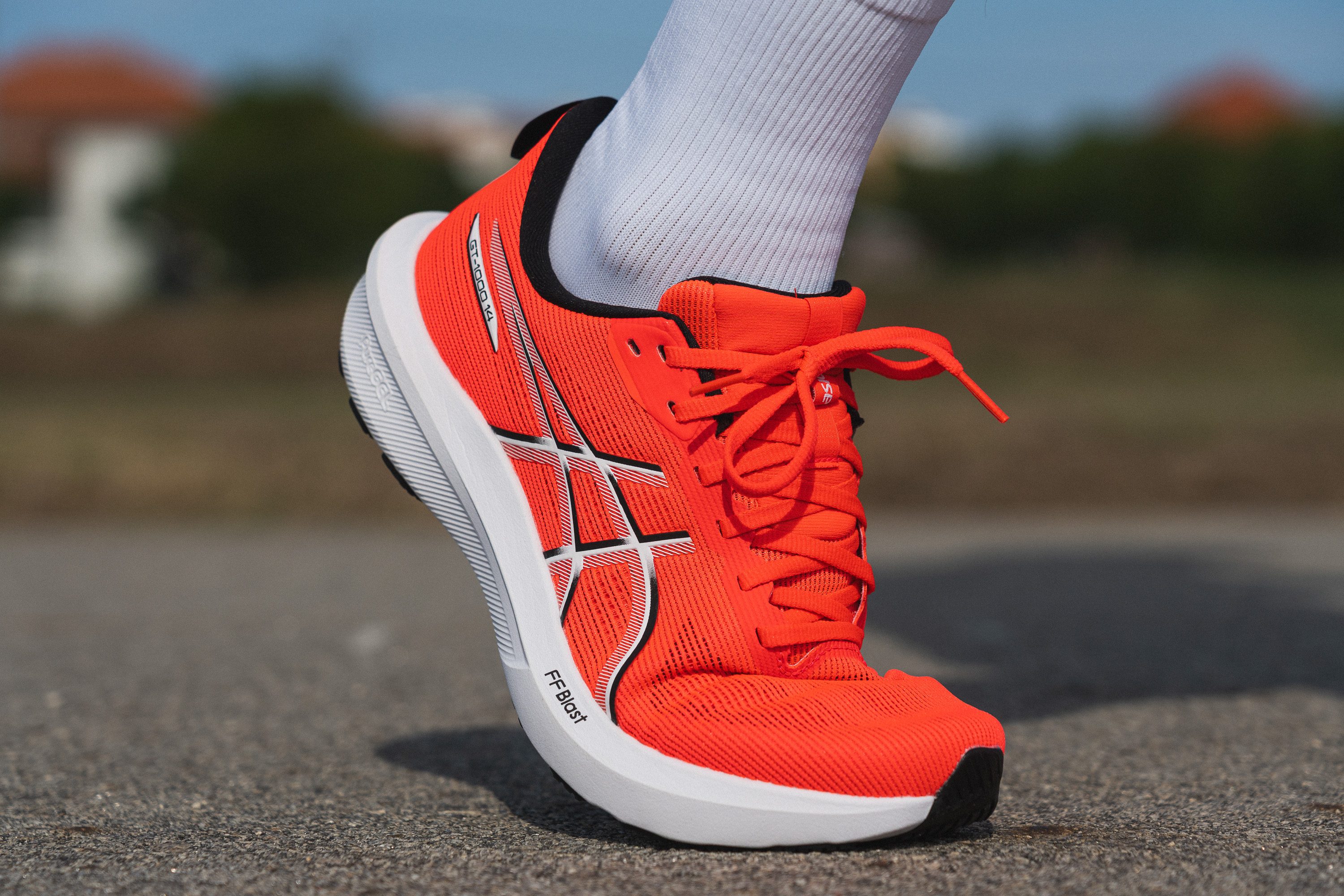
Esta versión mantiene la misma lengüeta gruesa de 8,1 mm de sus predecesoras, una elección que añade peso pero aumenta la comodidad. También analizamos el sistema de cordones, que utiliza ojales perforados básicos sin nada loco.
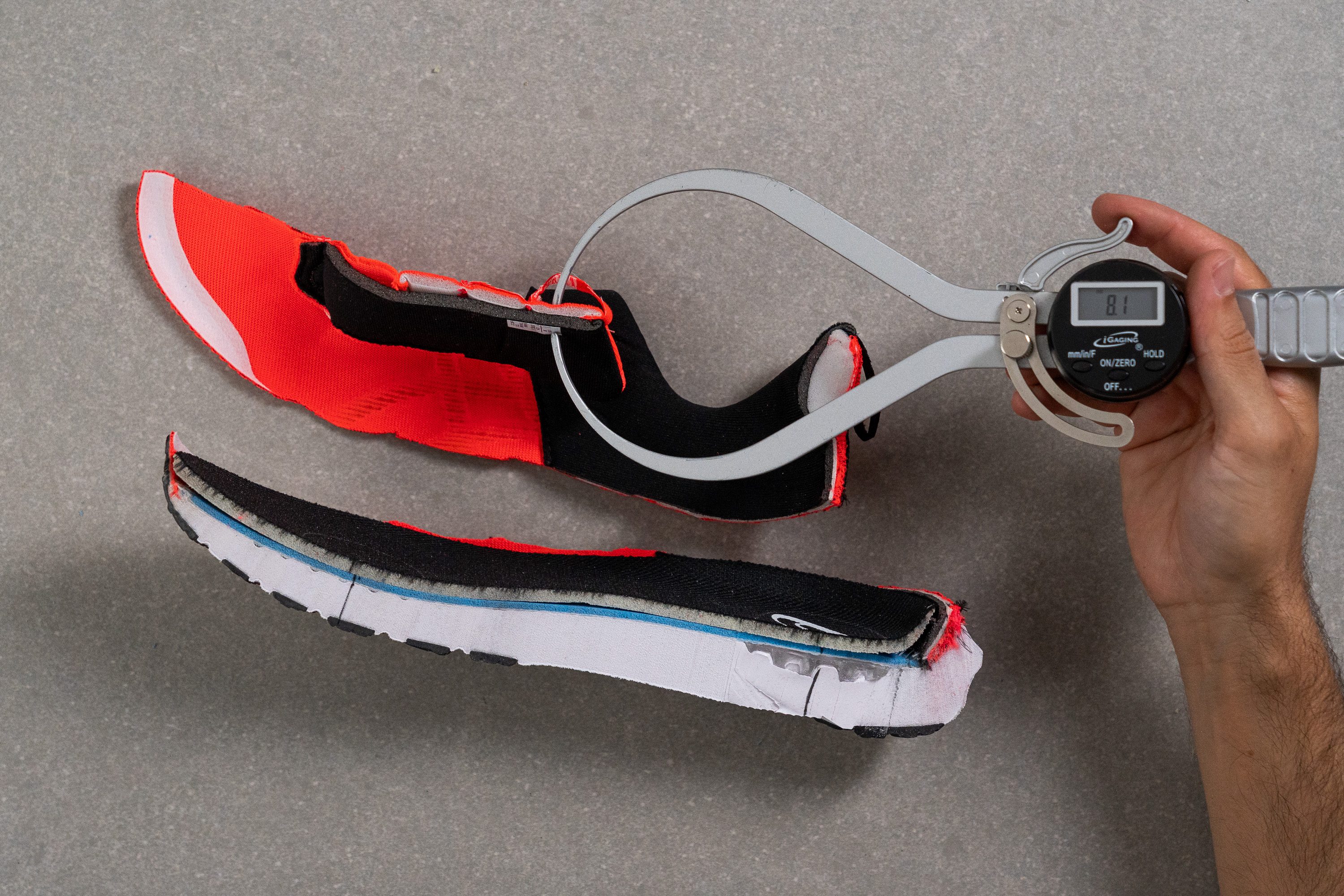
| GT 1000 14 | 8.1 mm |
| Media | 5.8 mm |
Lengüeta: tipo de refuerzo
Otro detalle que no suelen tener las zapatillas baratas son los refuerzos en la lengüeta, ya que es un detalle que solo solemos ver en los modelos de gama alta. Las GT 1000 14 todavía no tienen una lengüeta reforzada..., ¿qué te parece para la versión 15, ASICS?
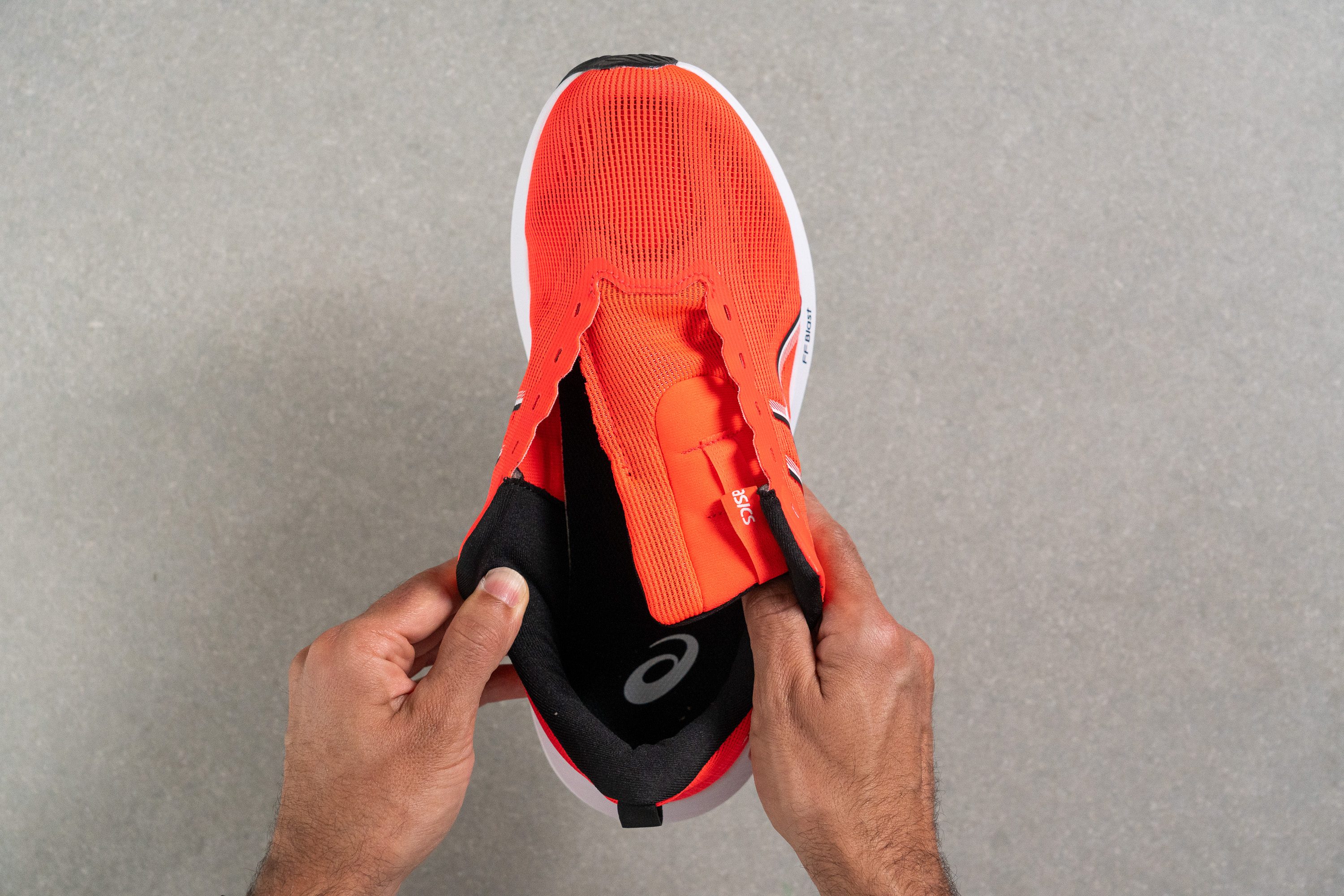
| GT 1000 14 | Ninguno |
Precio
Uno de los principales puntos fuertes de las GT 1000 14 es su precio accesible, ya que son más baratas que el resto de los modelos la línea de estabilidad de ASICS. Para los corredores que no necesitan materiales premium ni el máximo rendimiento, nos parecen una opción con una relación calidad-precio excelente.
| GT 1000 14 | $110 |
Tirador del talón
Una de las pequeñas modificaciones de diseño con respecto a la versión 13 es que este modelo ahora tiene un tirador que mejora tanto la funcionalidad como la estética.
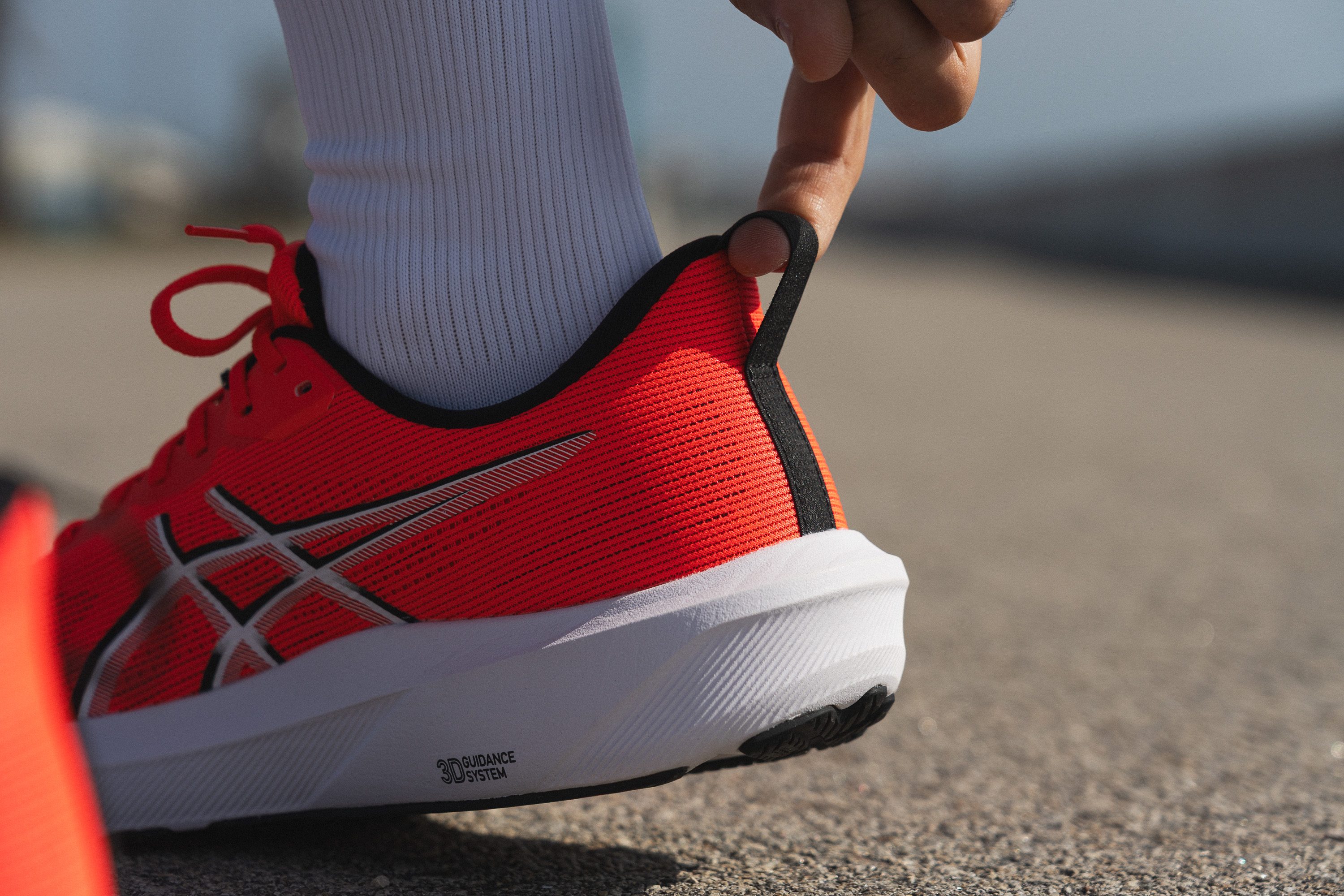
| GT 1000 14 | Tirador circular |

